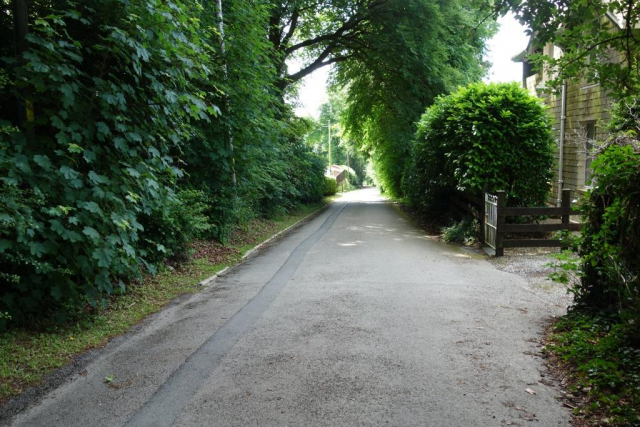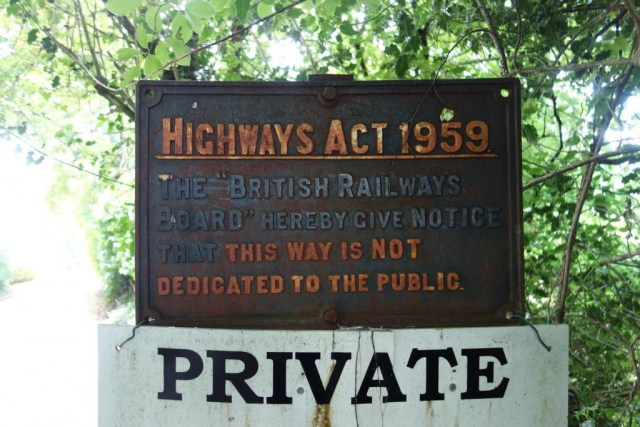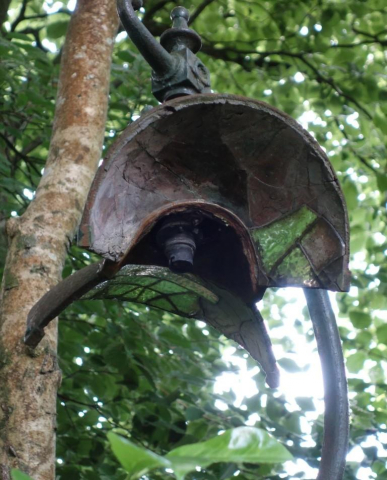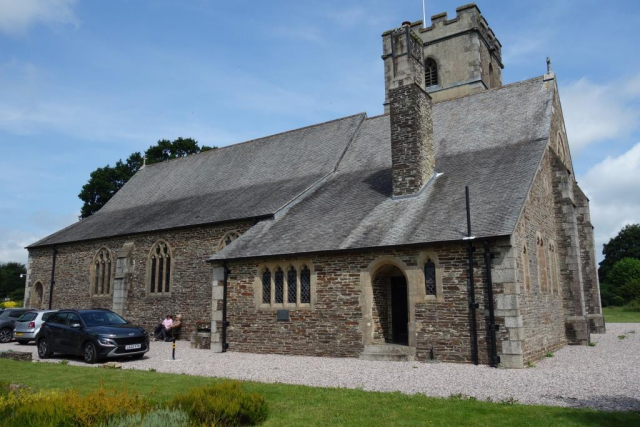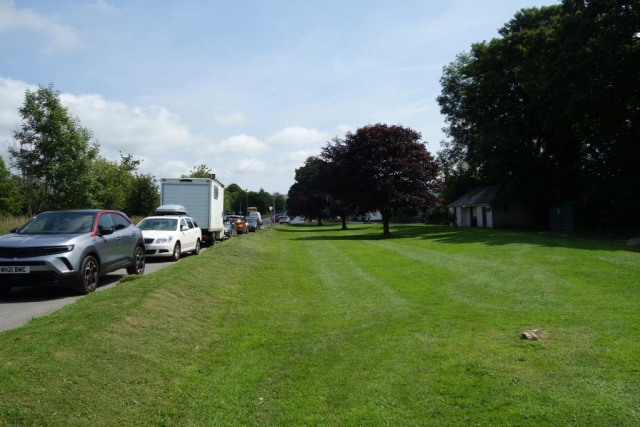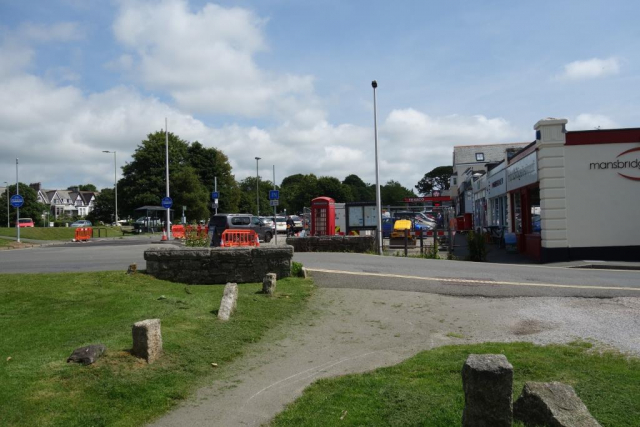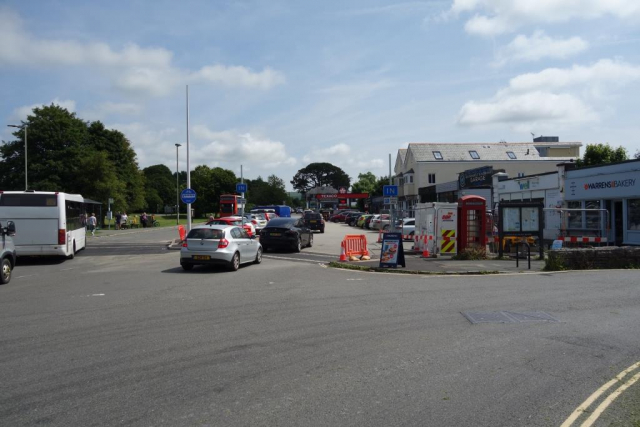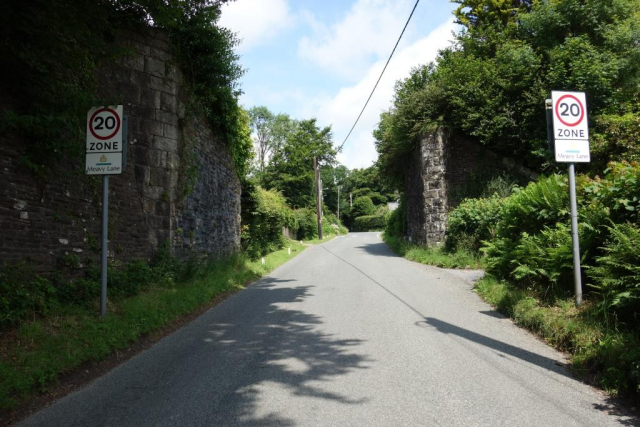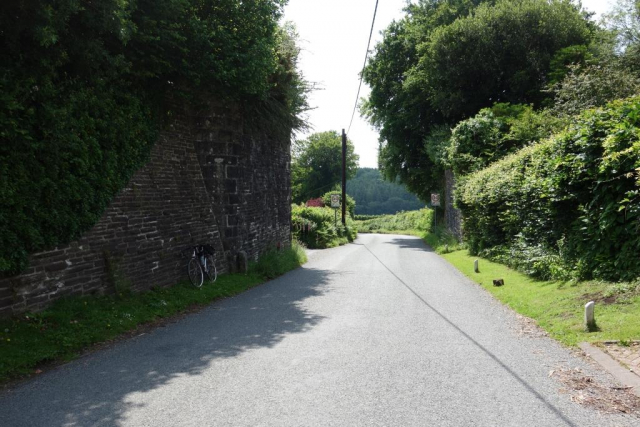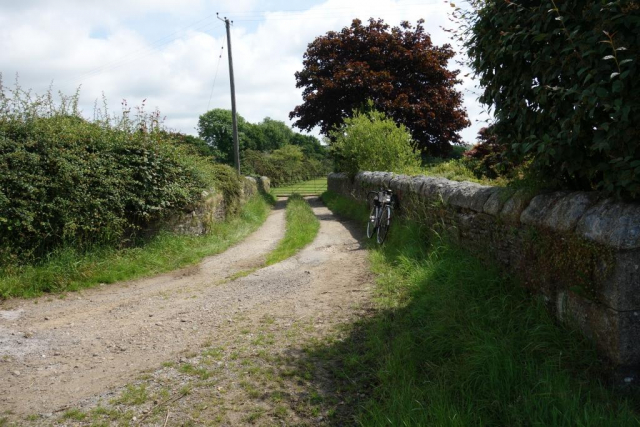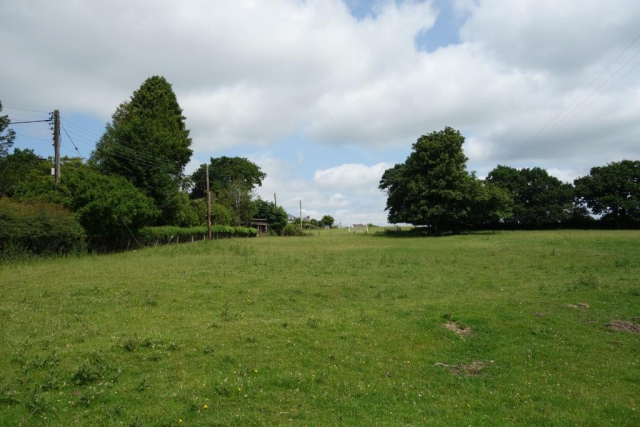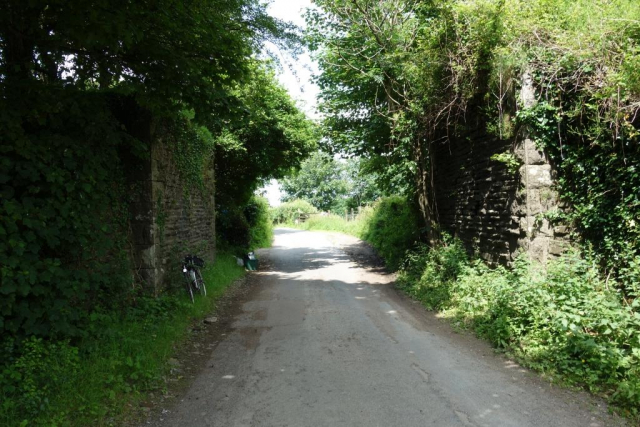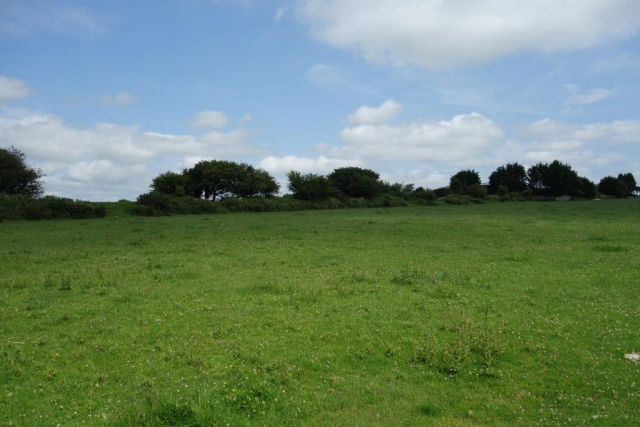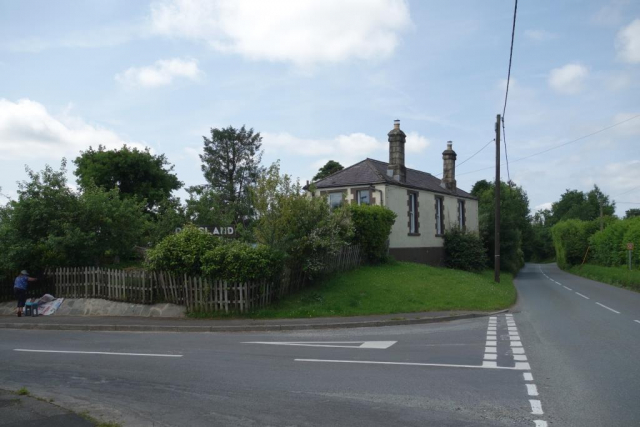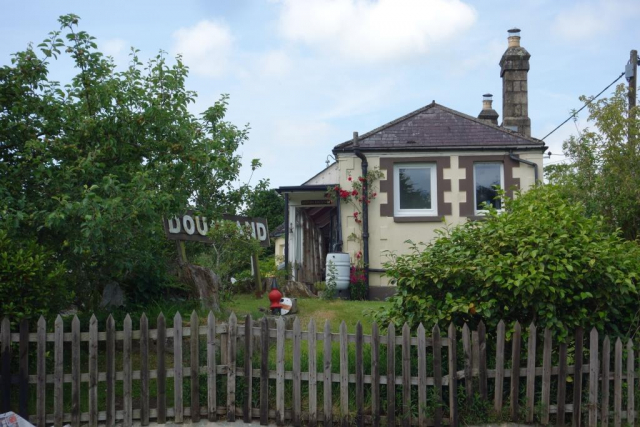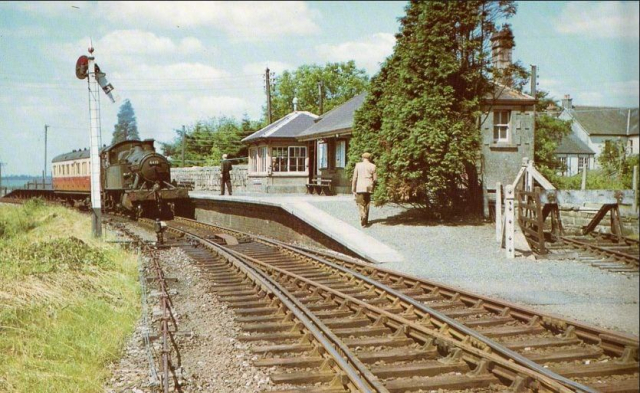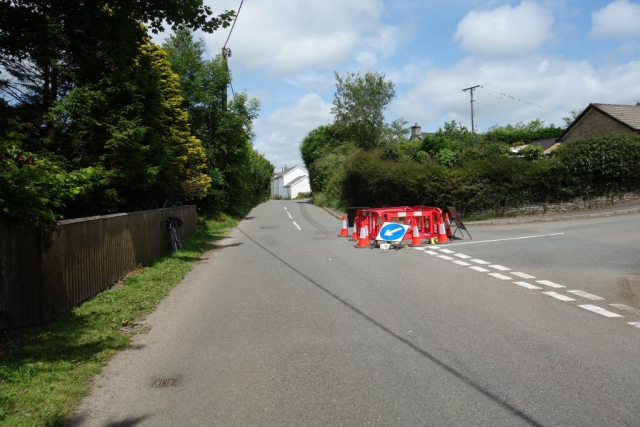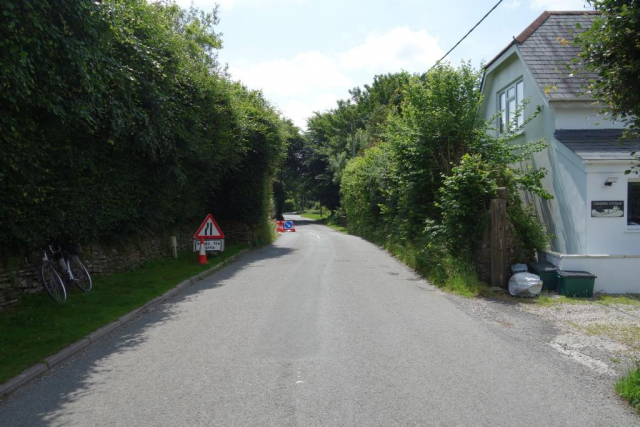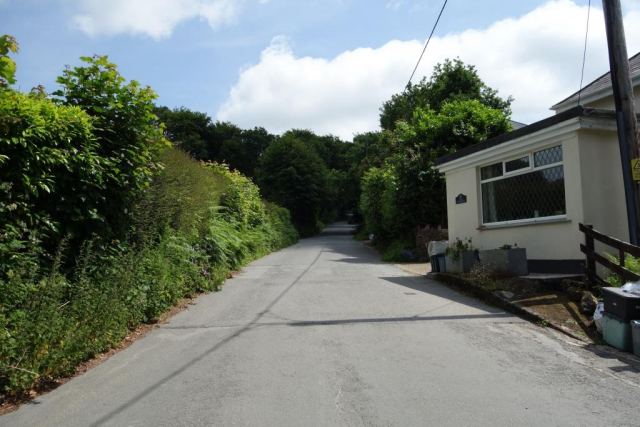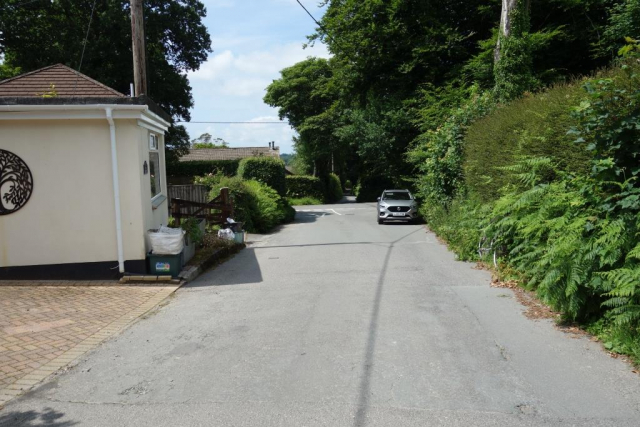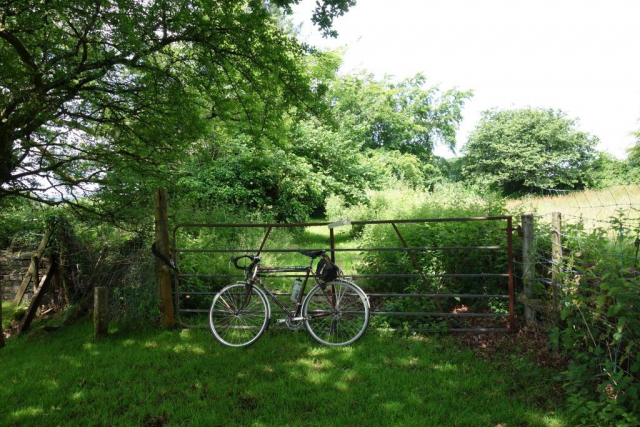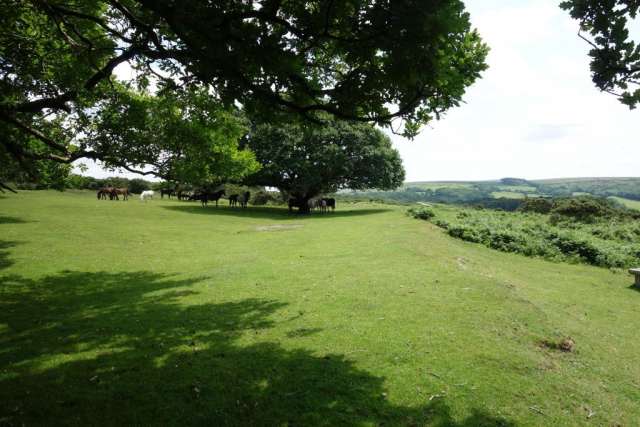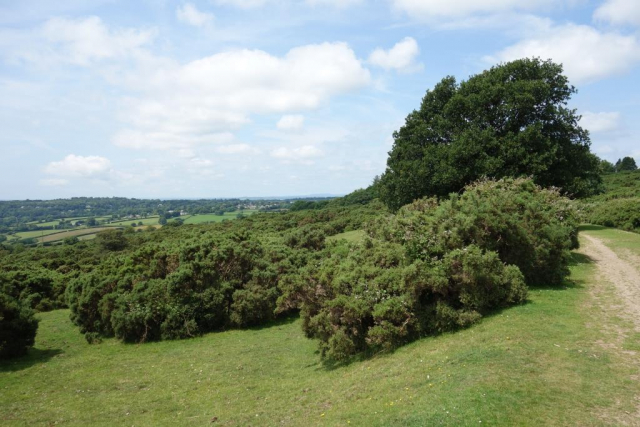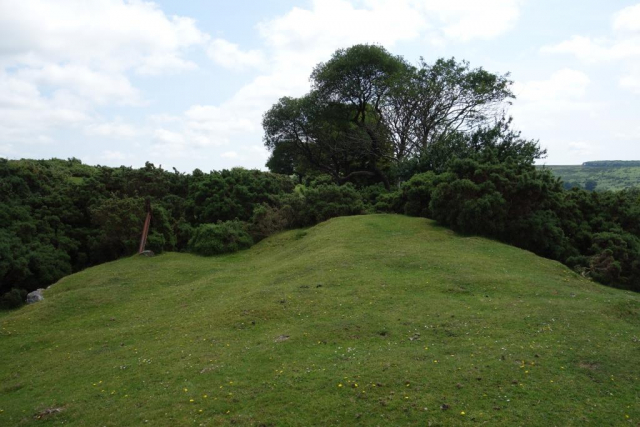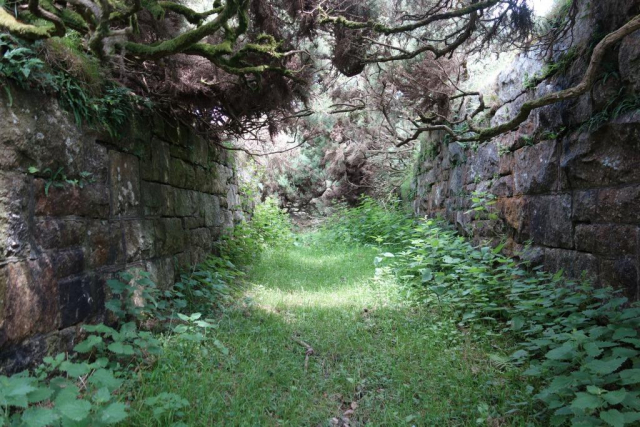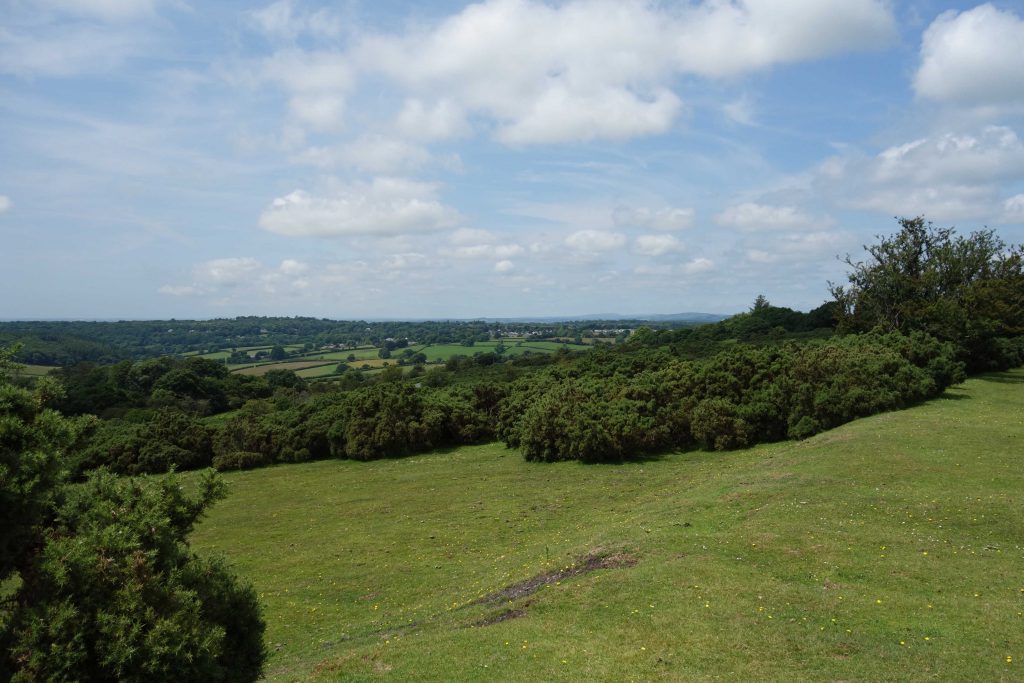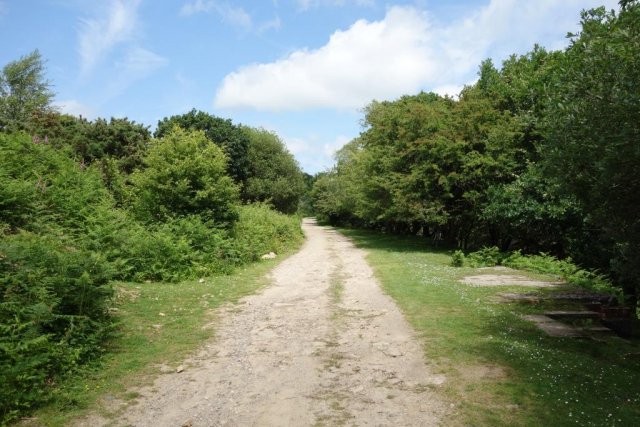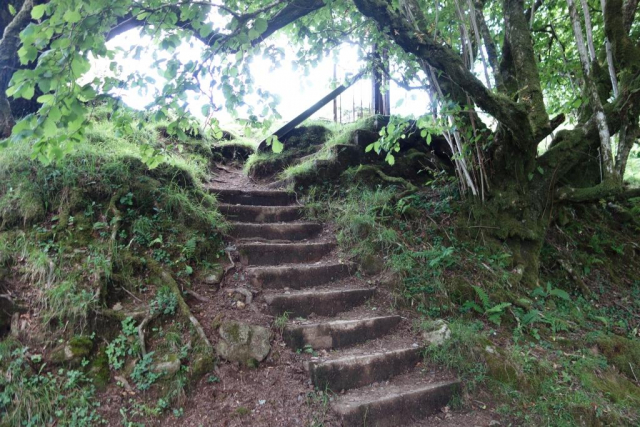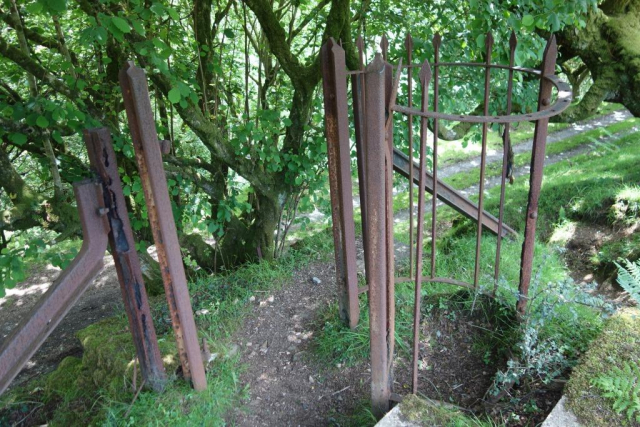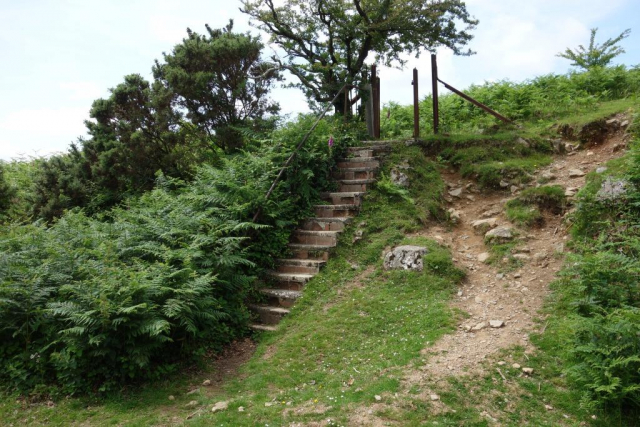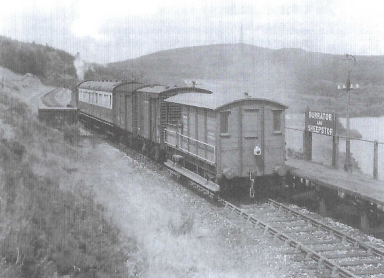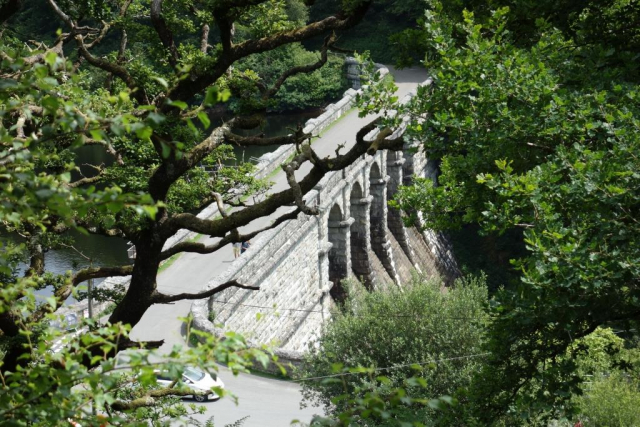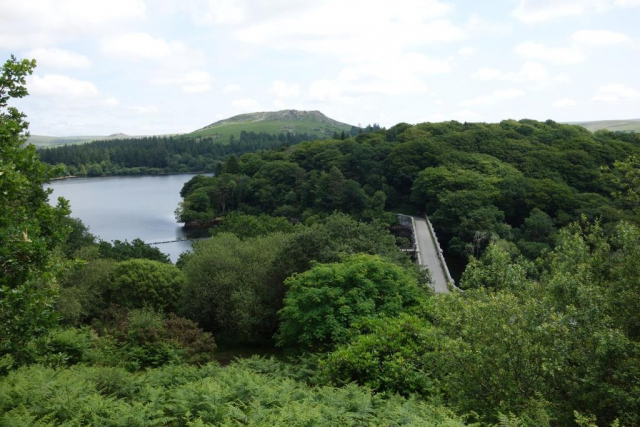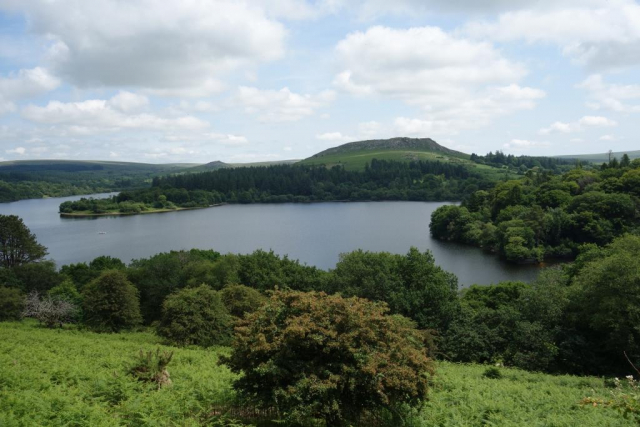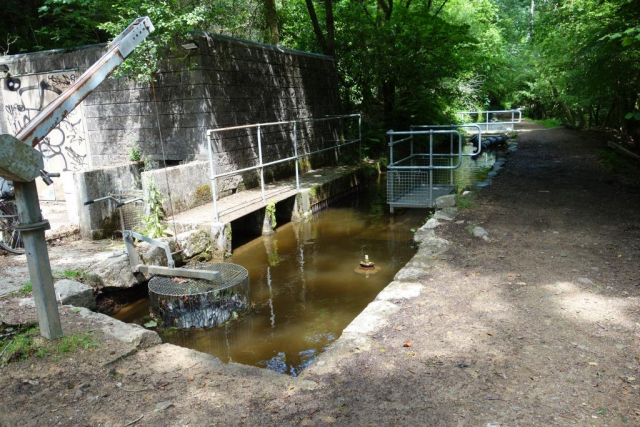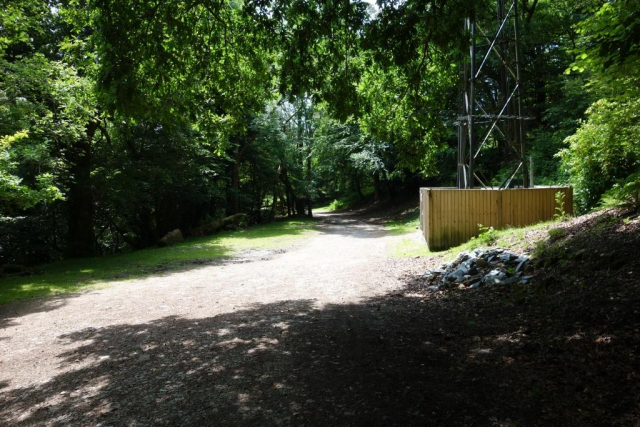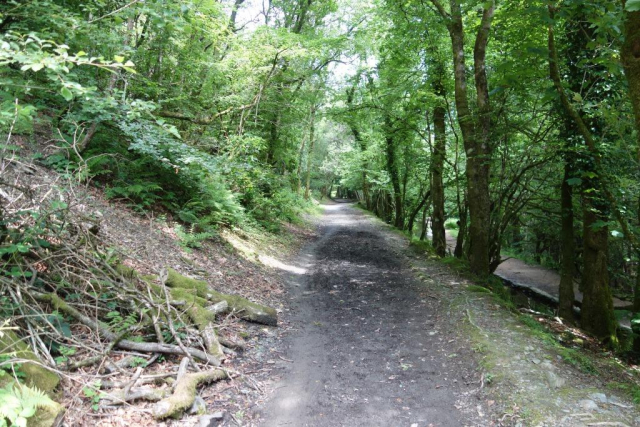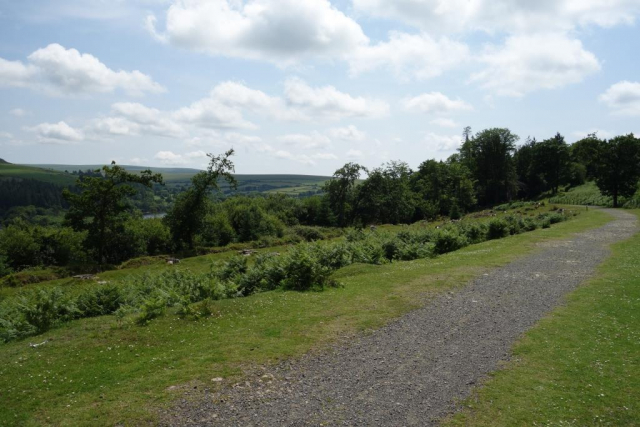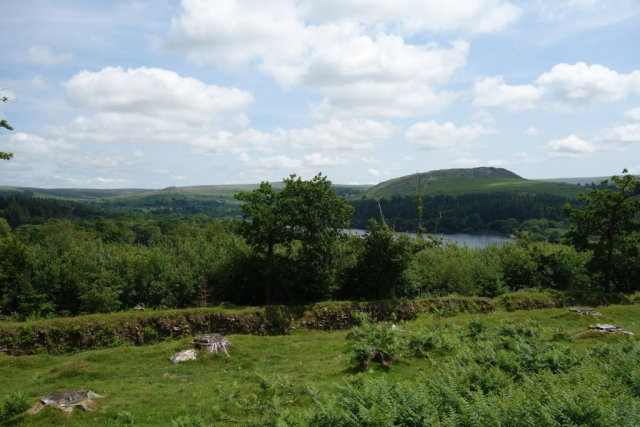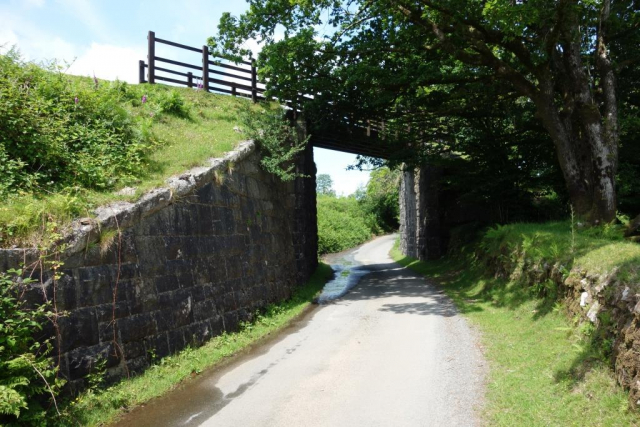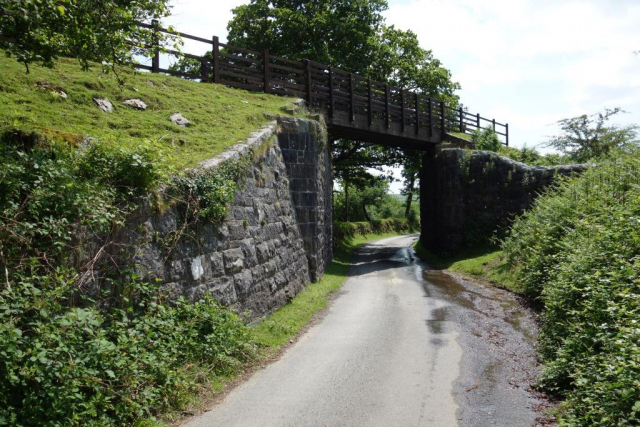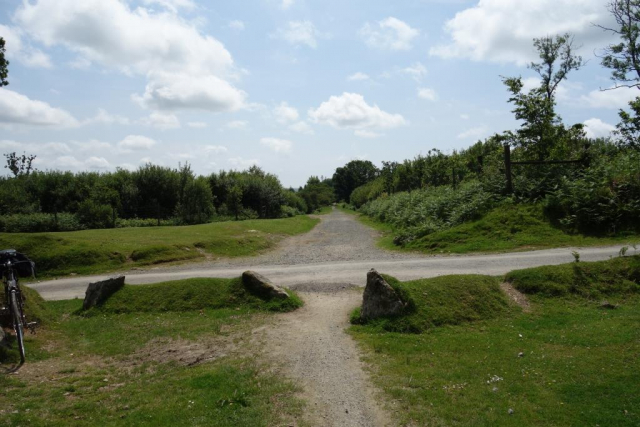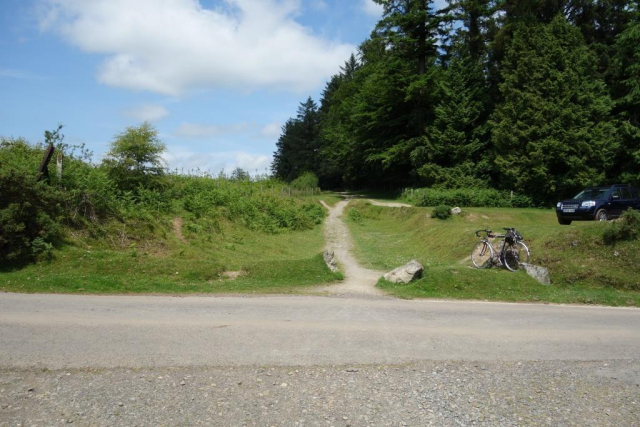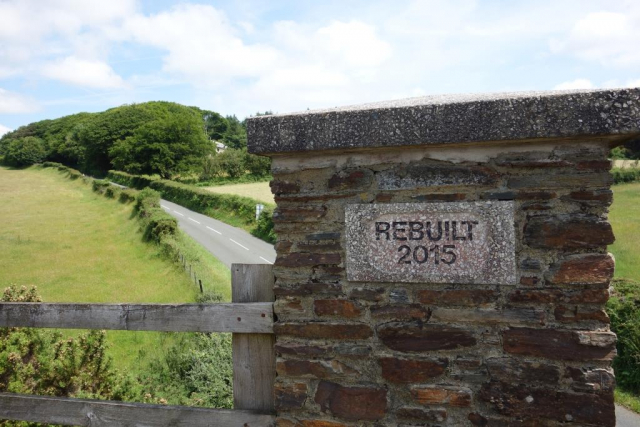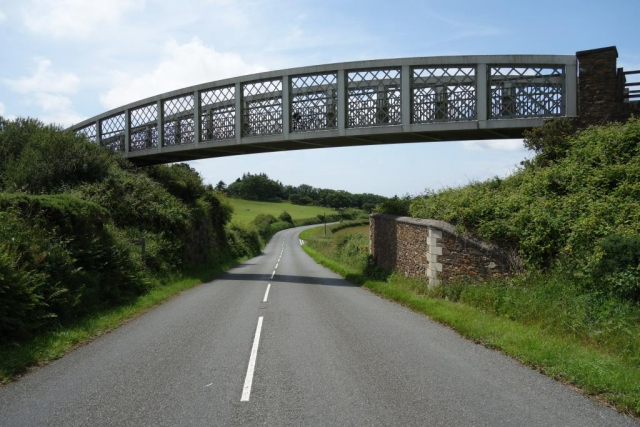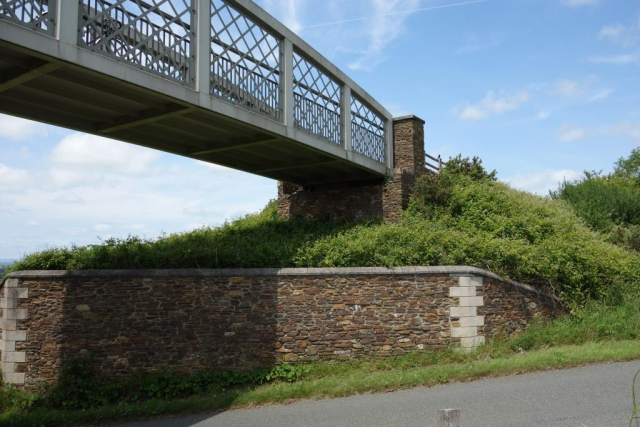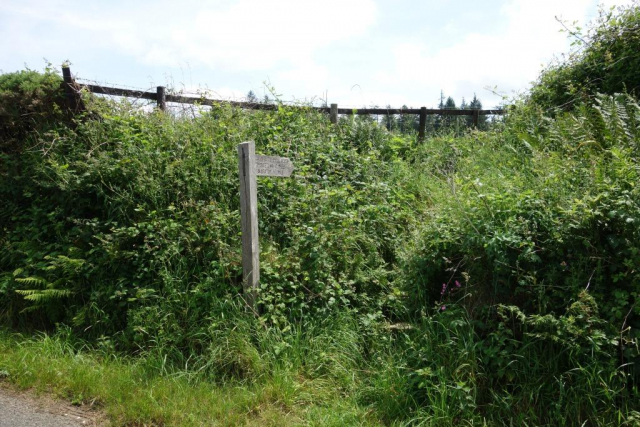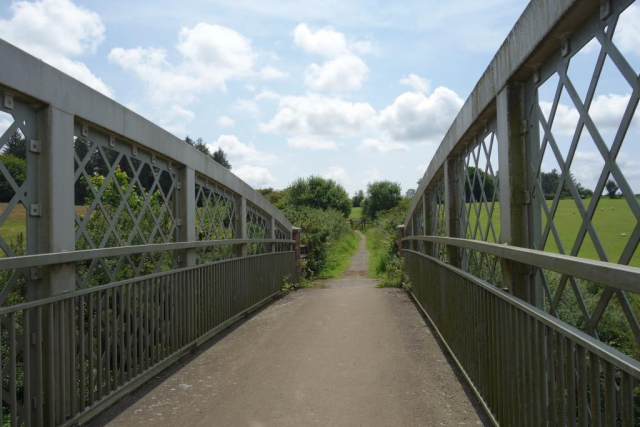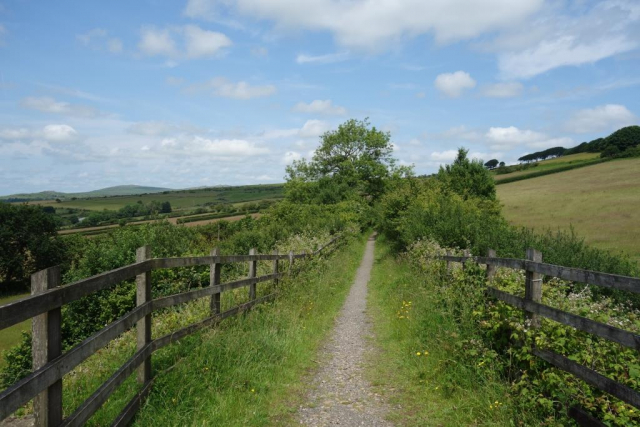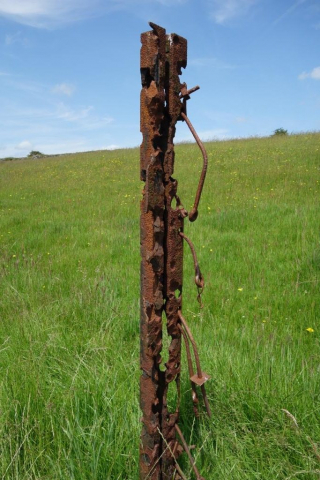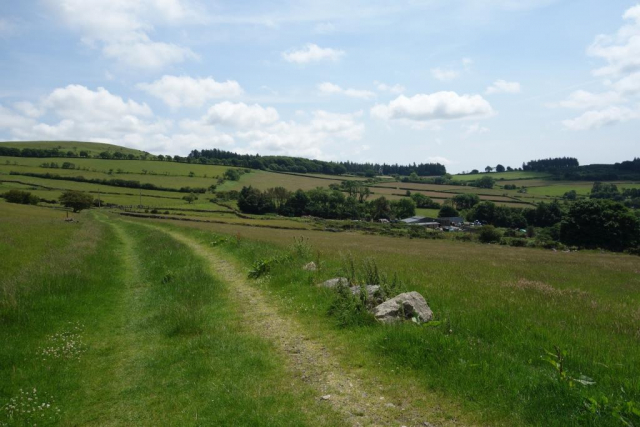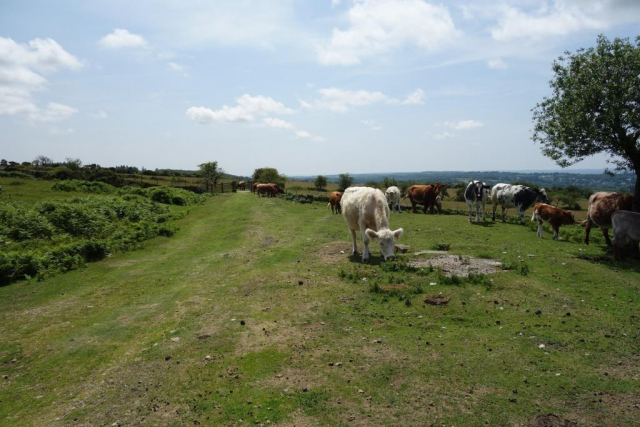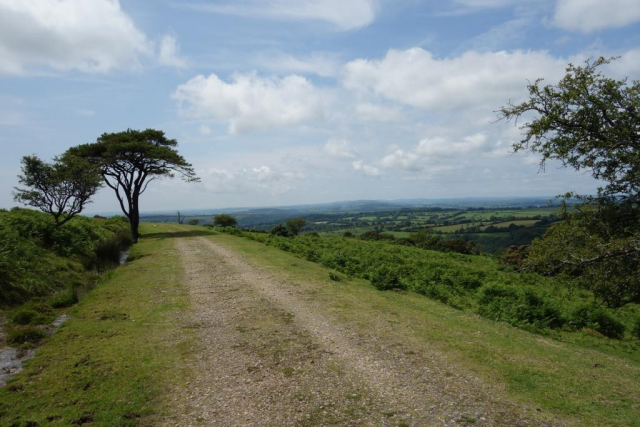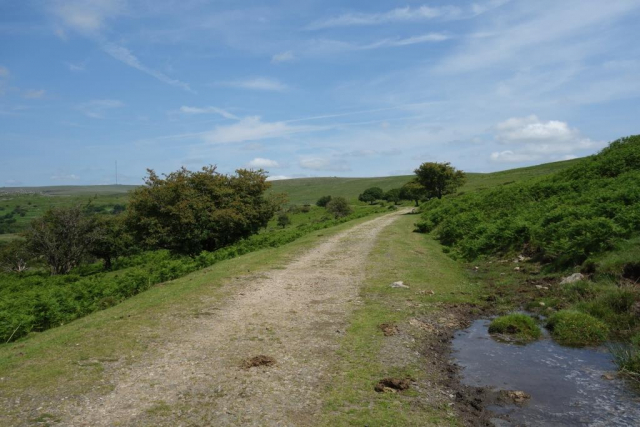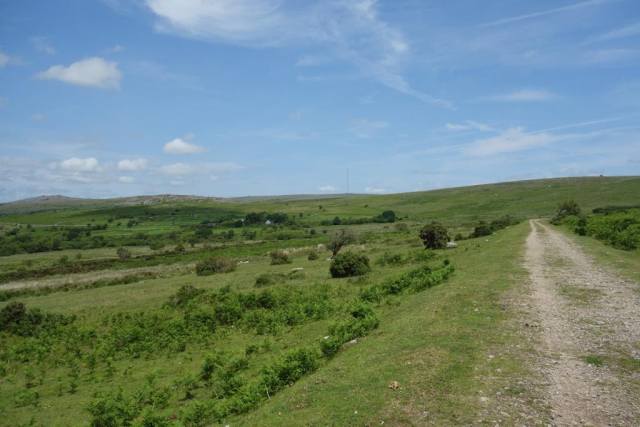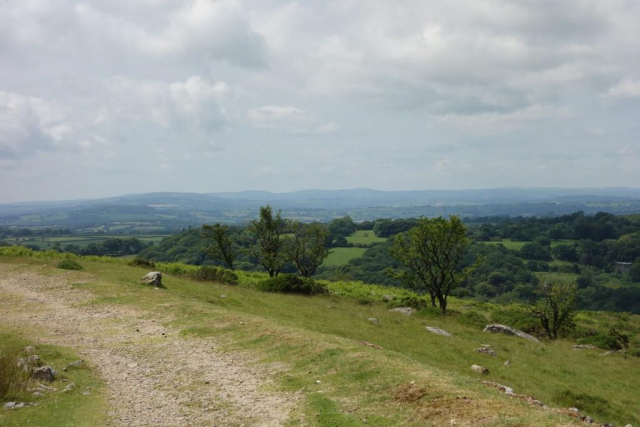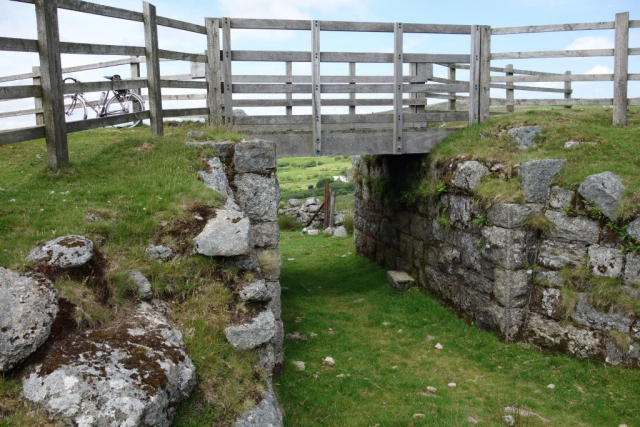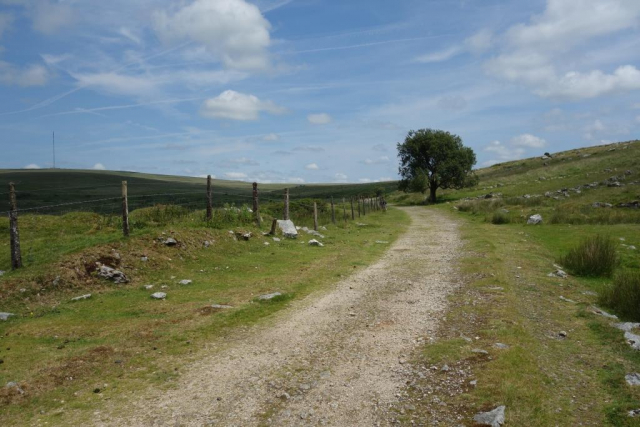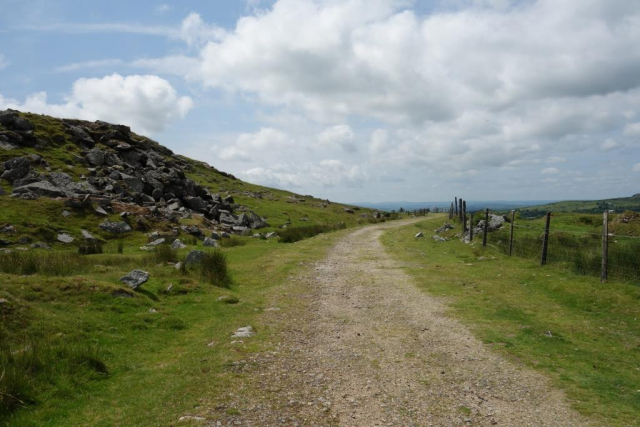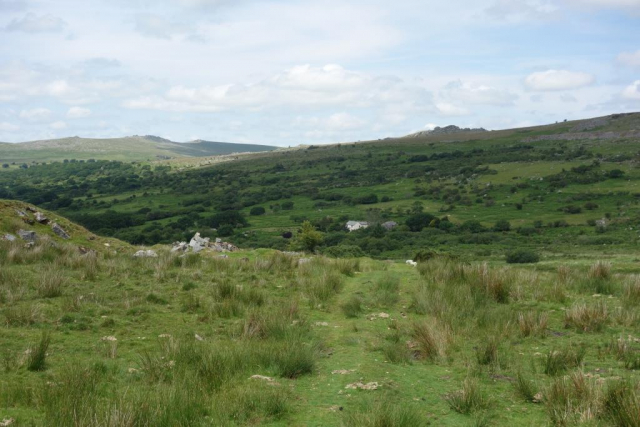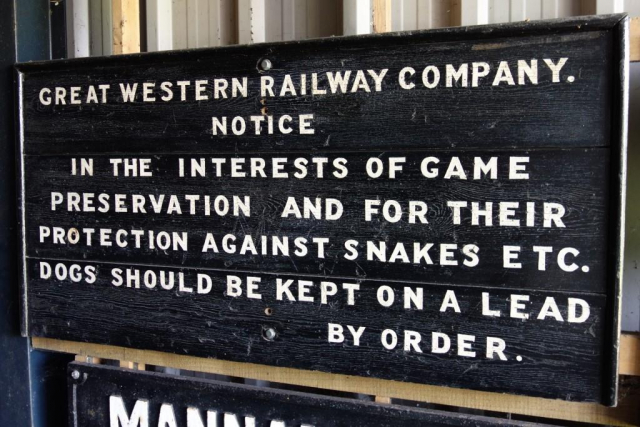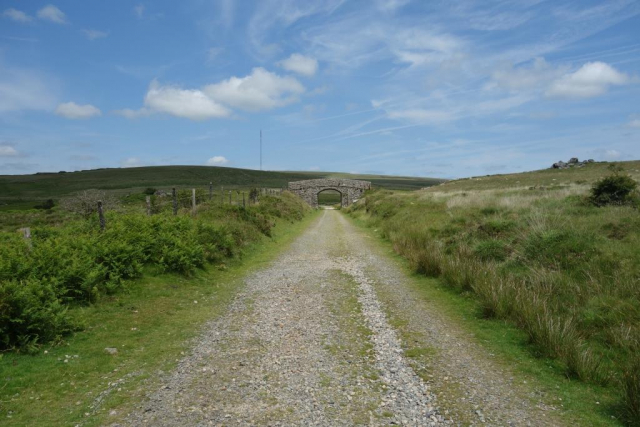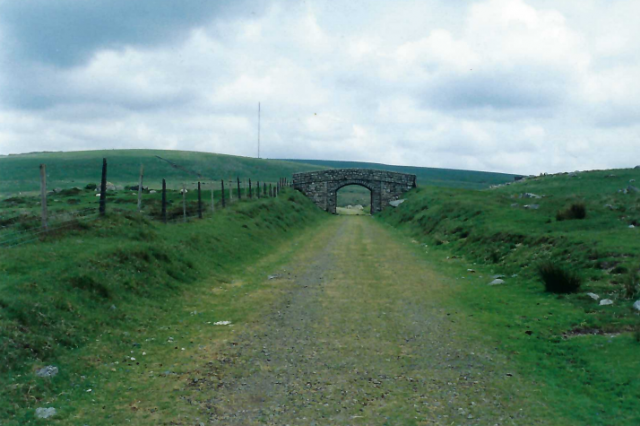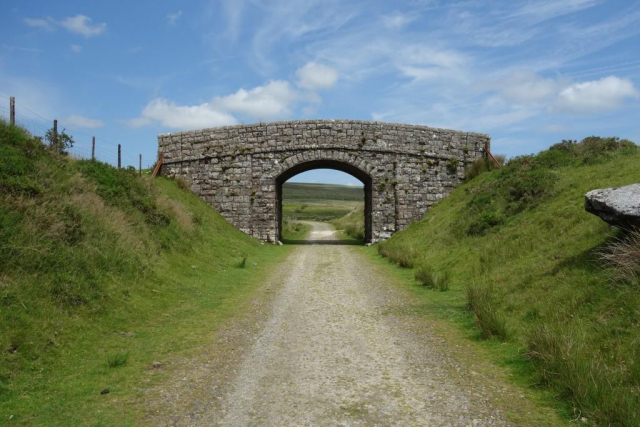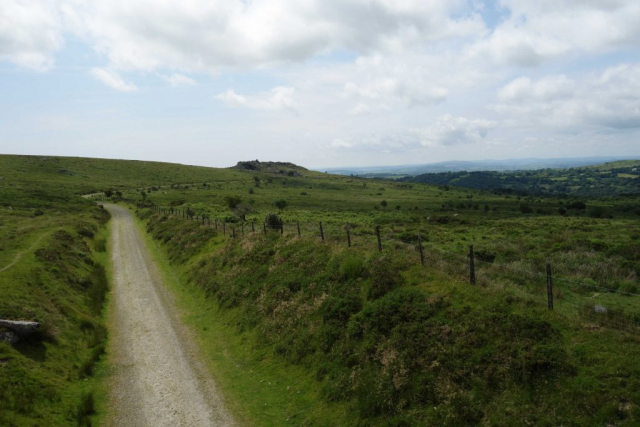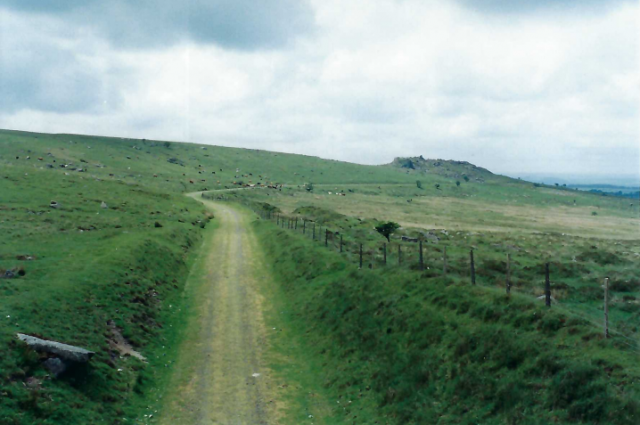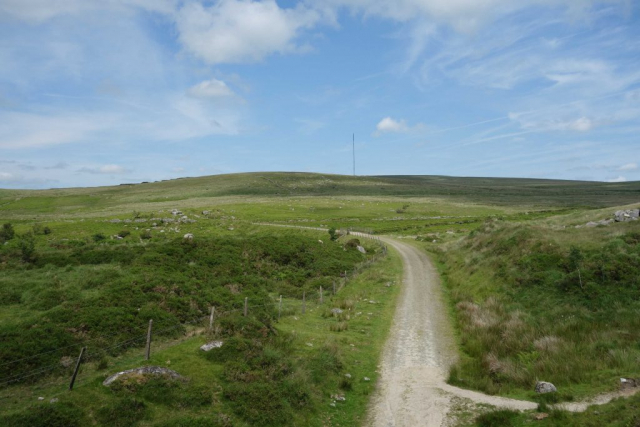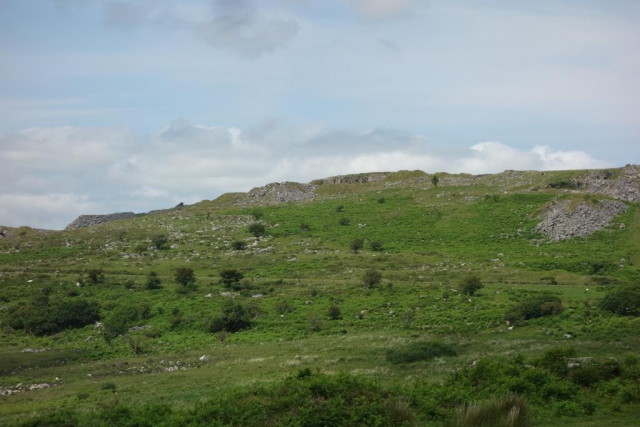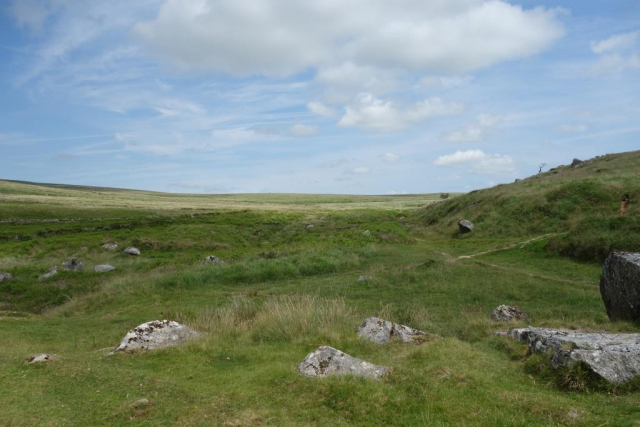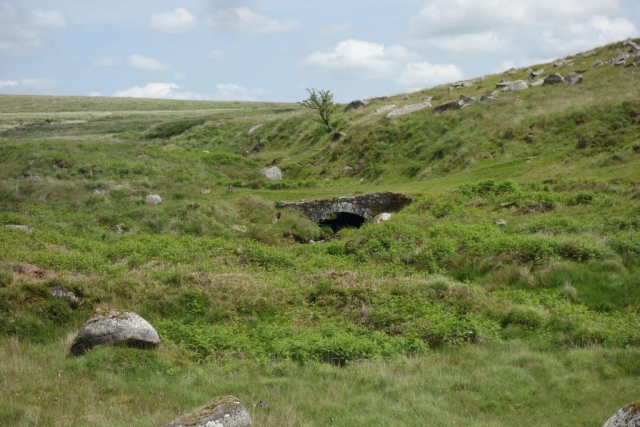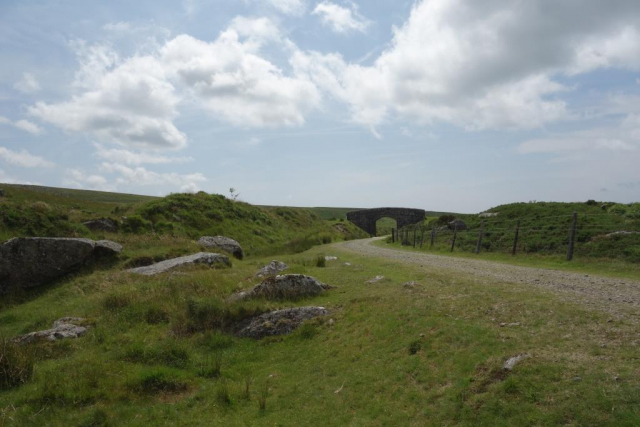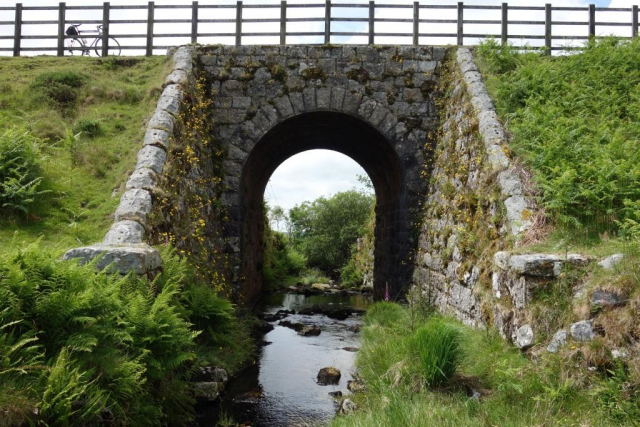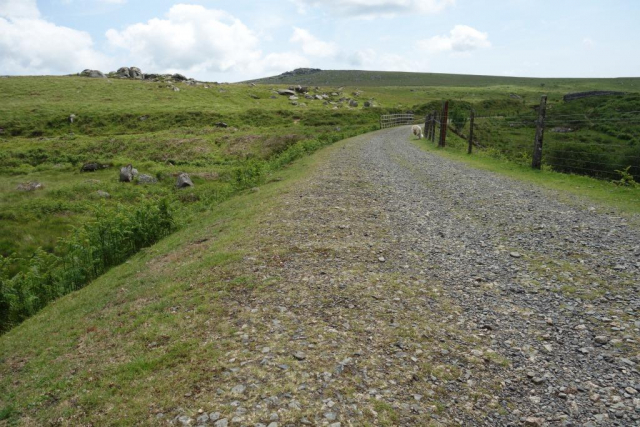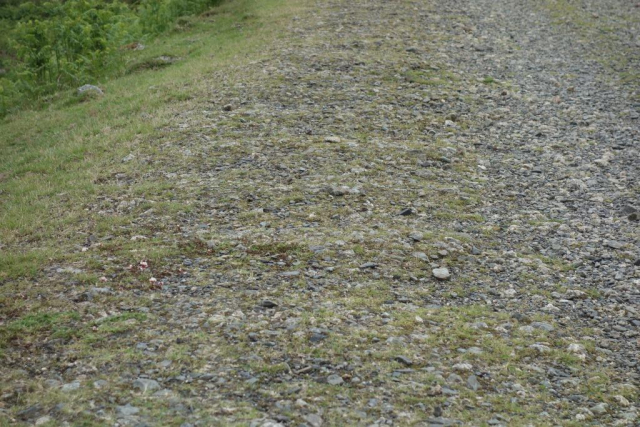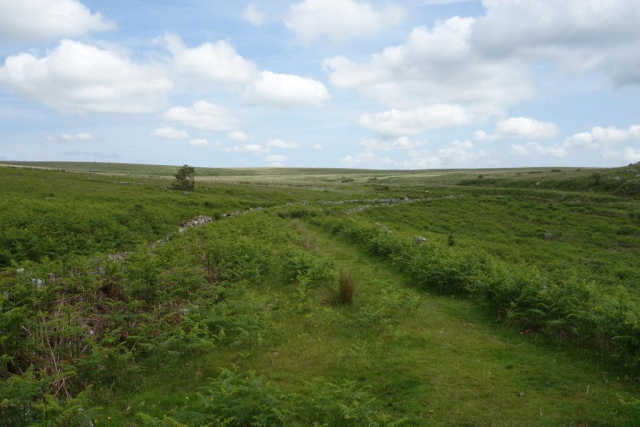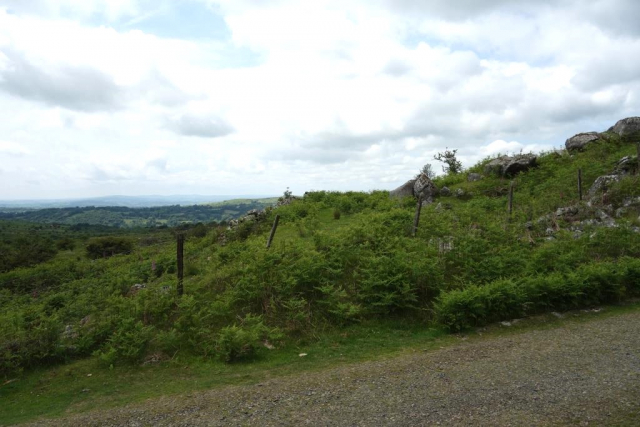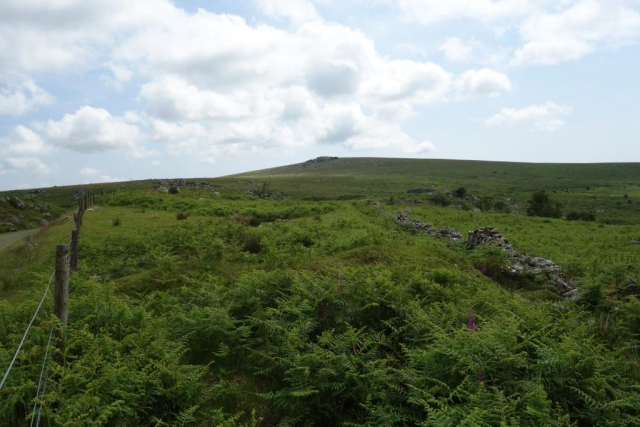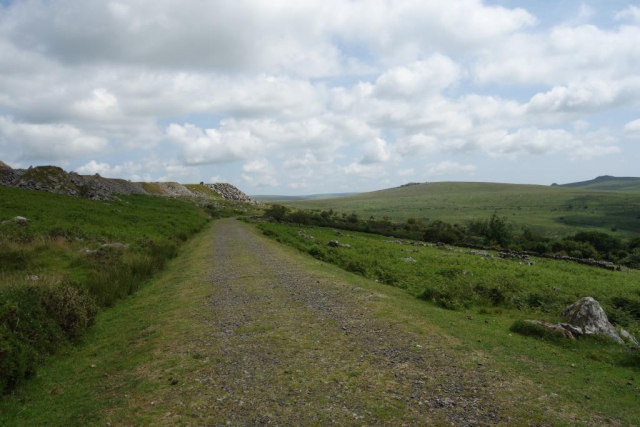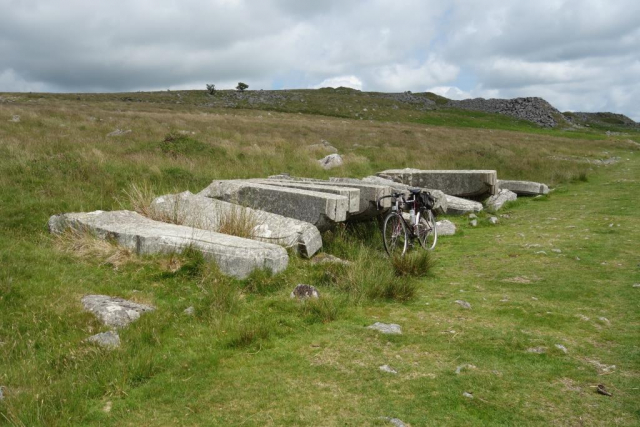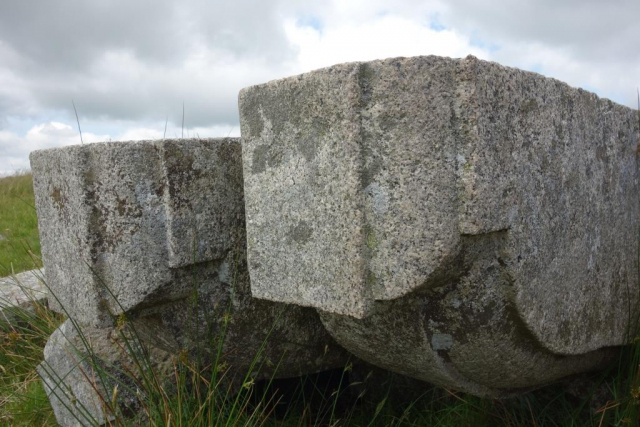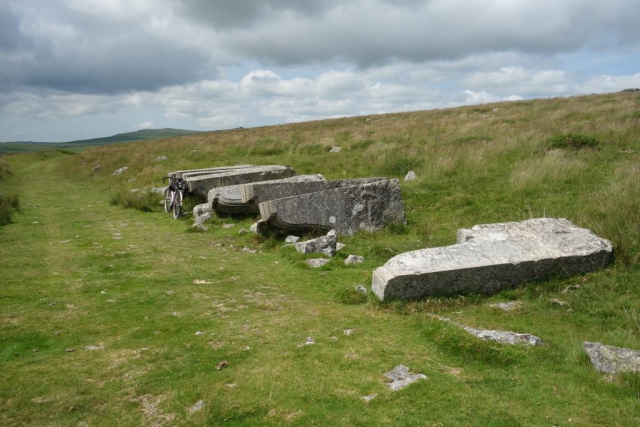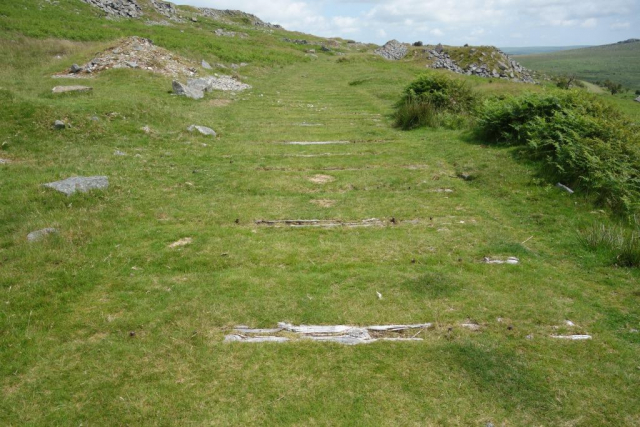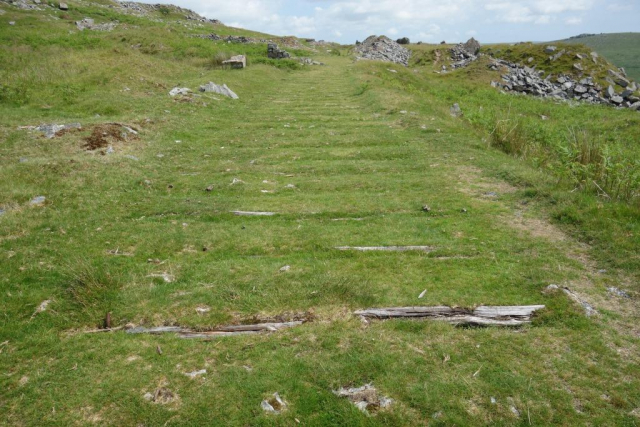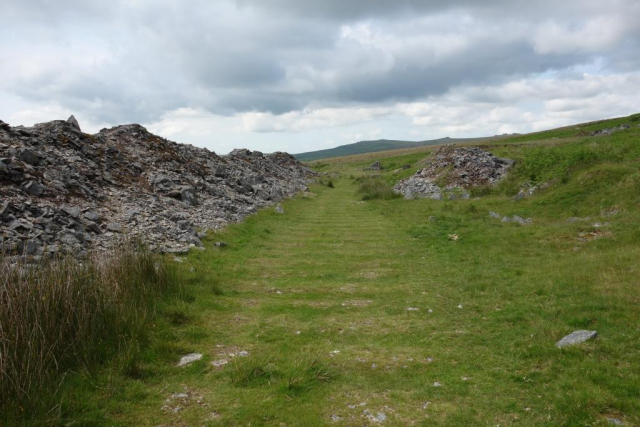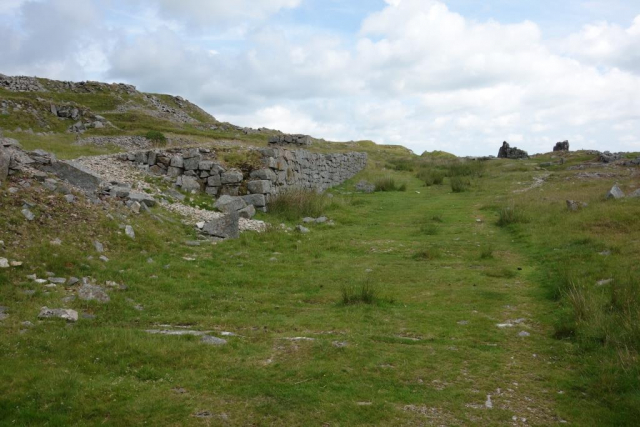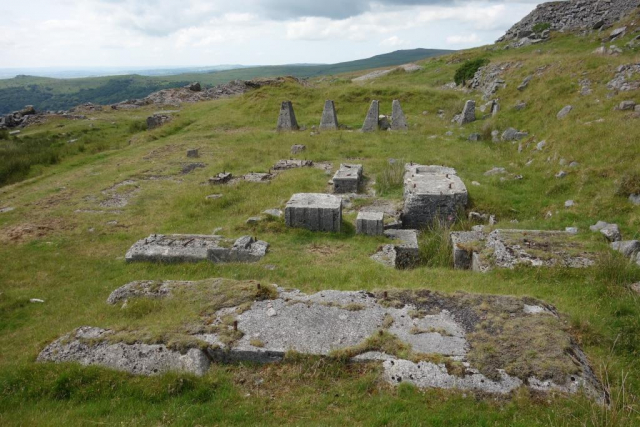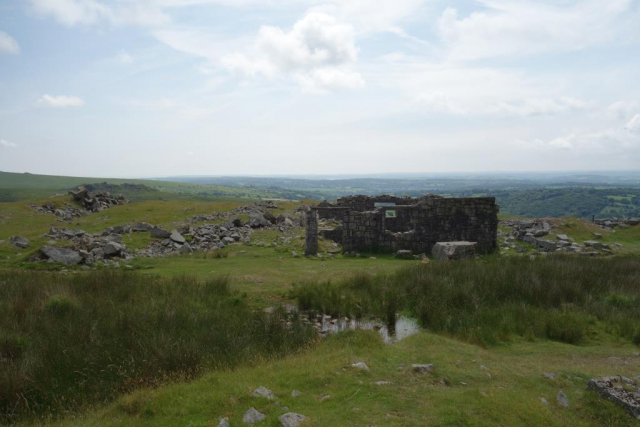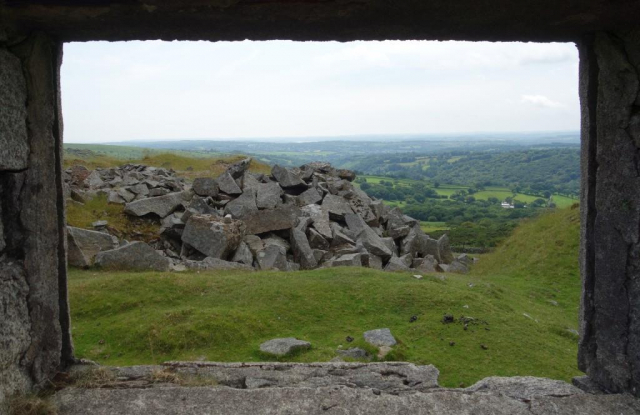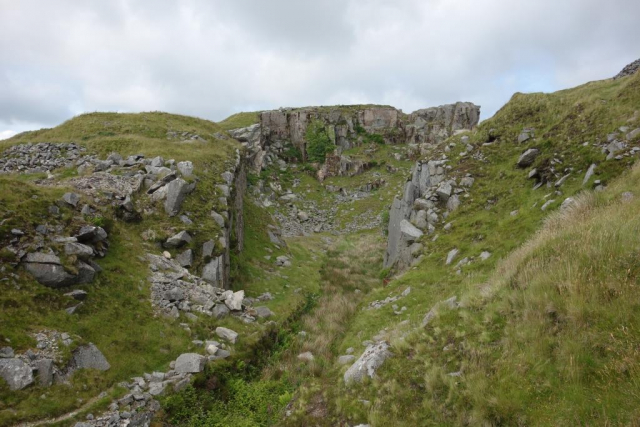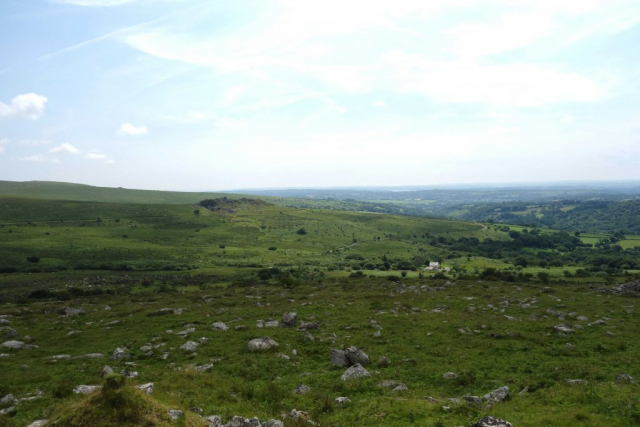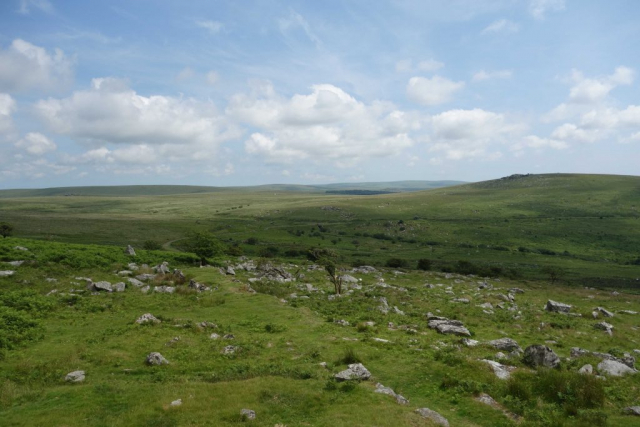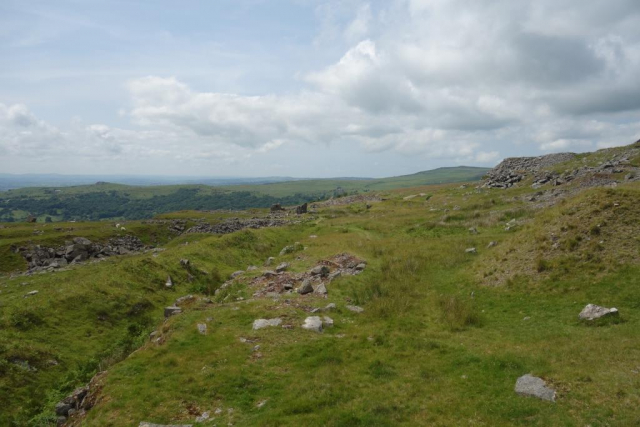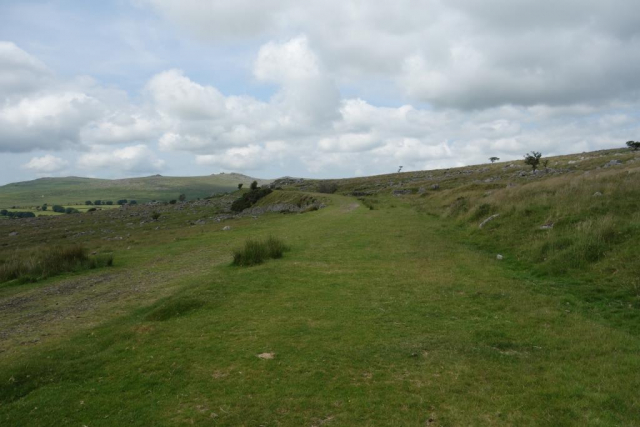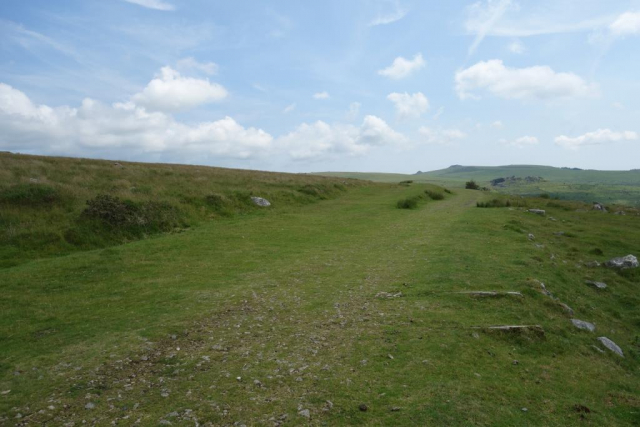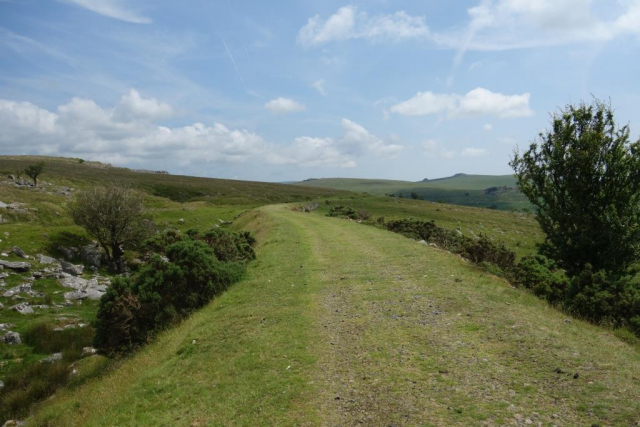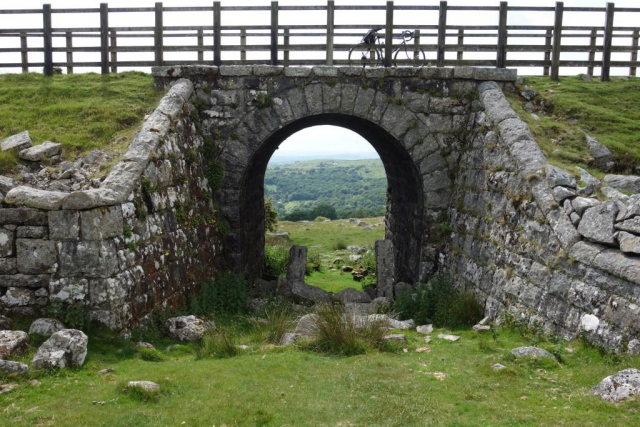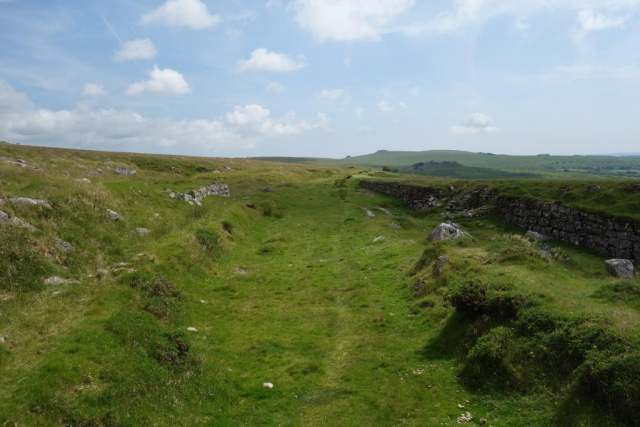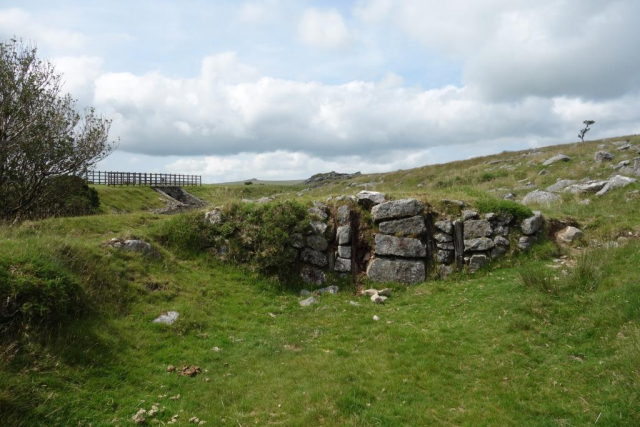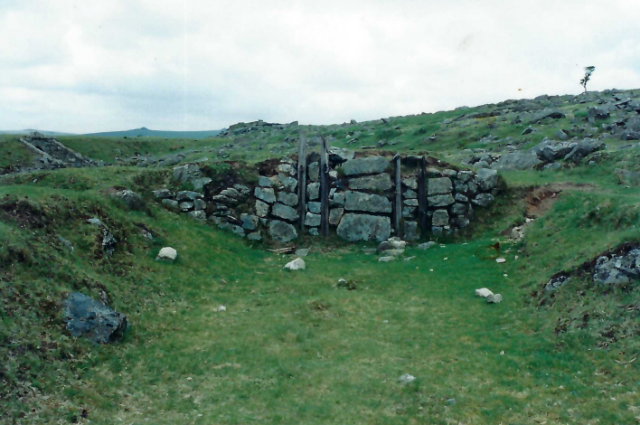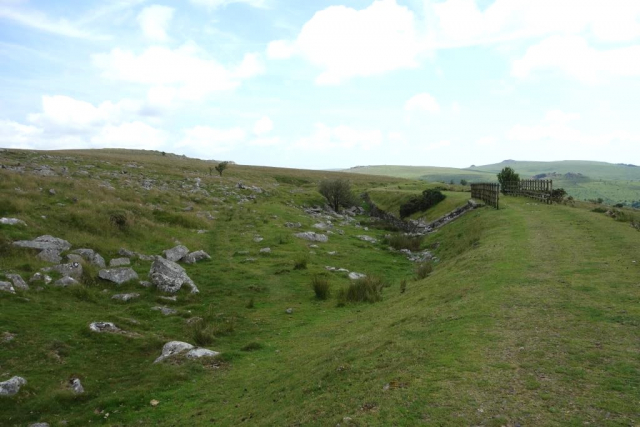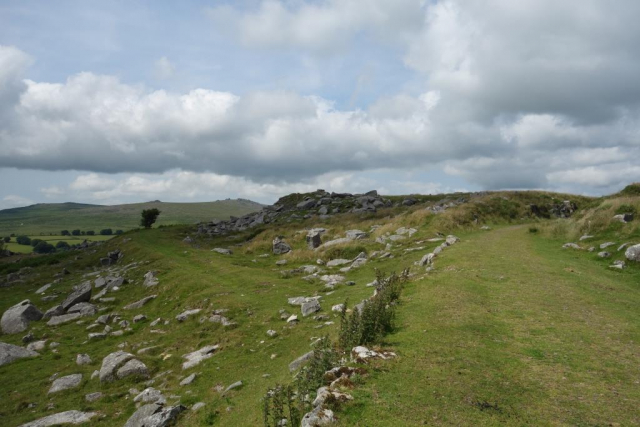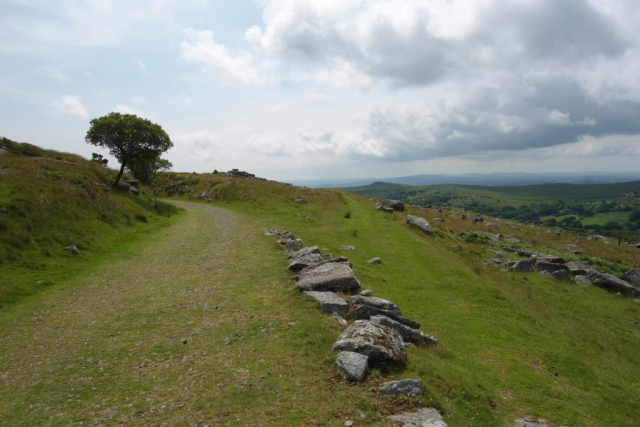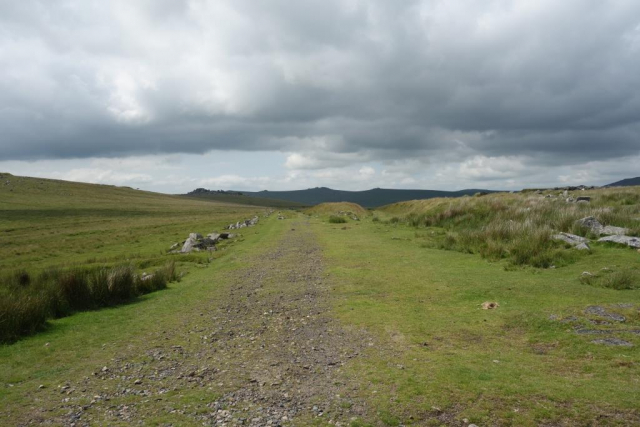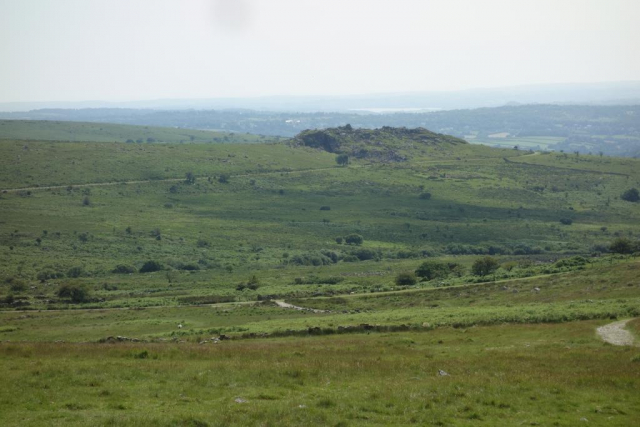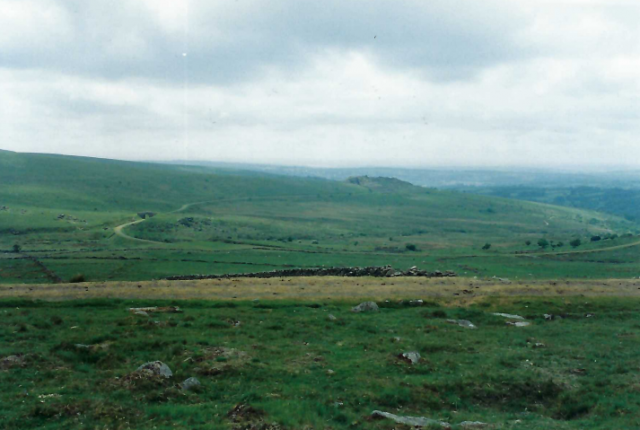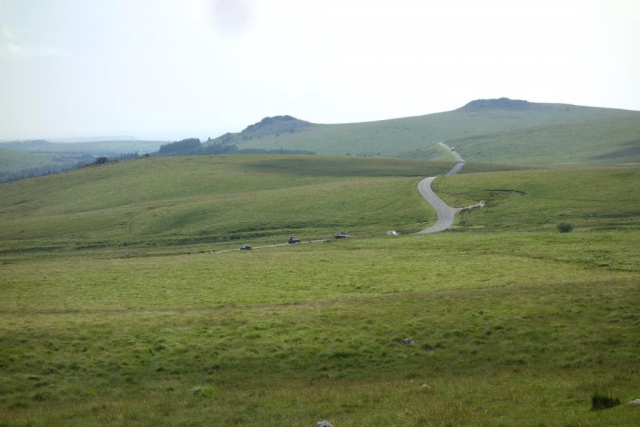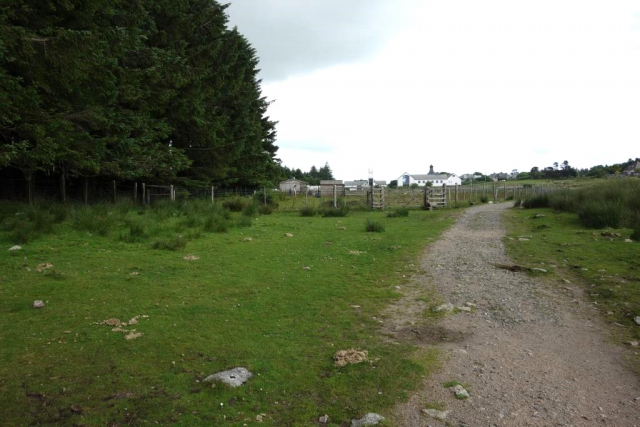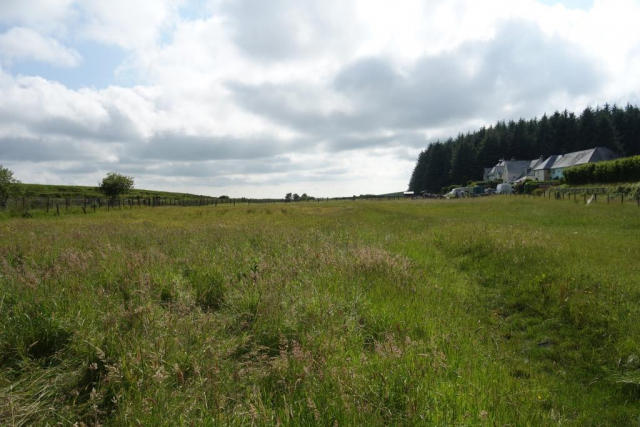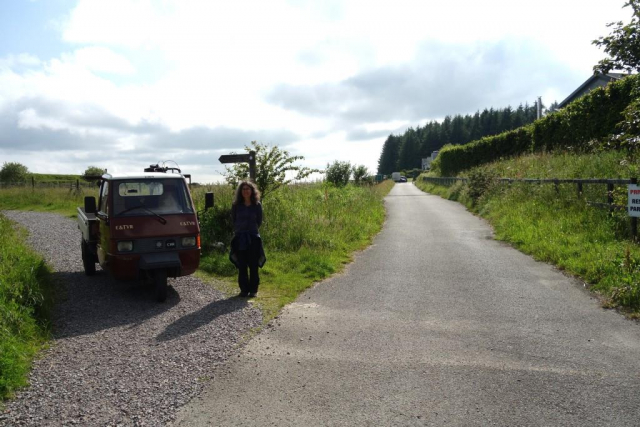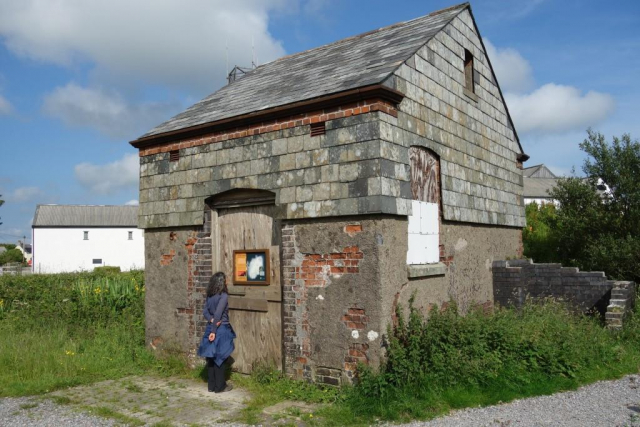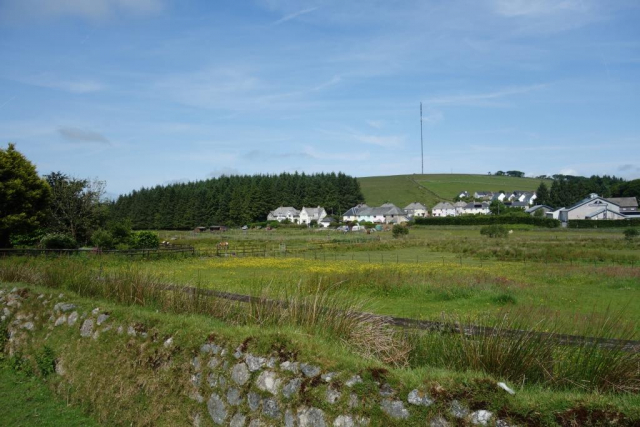The few photographs of the line in the library at Christow were taken in May, 1992, the last time the scout had followed the moorland stretch. Signing out the utilicon for a route refresher was easily justified.
A camping guest accompanied the scout to Princetown and booked the arrival time: 1038. The scout set off down the hill and got to Yelverton at 1108, not quite reaching 40 m.p.h. The wind noise on an early part of the descent was deafening and the air was still cool.
Yelverton
In contemporary photographs of the Princetown platform at Yelverton, a neat laurel hedge can be seen beside the track. Being a coloniser, the untended laurel has suppressed almost all else, enabling many little finds, including footplate equipment and the prostrate concrete starting signal post. The most remarkable discovery was a 24V carriage light bulb which had the G.W.R. roundel marked very faintly on the opal globe. It must have lain where it was since a man changed one and tossed the dud out through a window. The find was given to the Great Western Society.
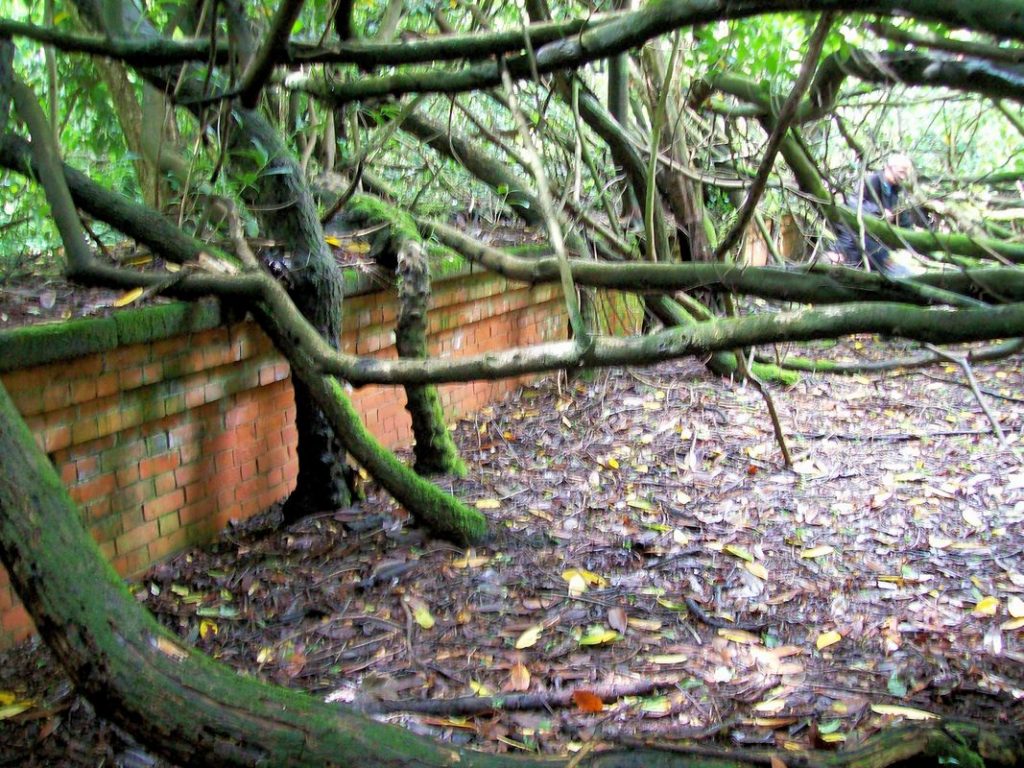
This is what happens when you stop clipping a laurel hedge. Was it planted alongside the Princetown line to give some privacy to Elfordtown, the house in whose grounds the station was built and to which ownership returned upon closure? The accommodation bridge at the Horrabridge end of the station linked the severed estate.
Until Yelverton was built, Princetown trains started at Horrabridge. When the new station opened, the Princetown Branch had a double line junction with the Launceston Branch. This was later reduced to the single connection with the Up Main. The gap that was left by the loss of the other line was filled by a tapering platform extension made of timber. This was still there when the scout found himself clambering over the laurel tentacles.
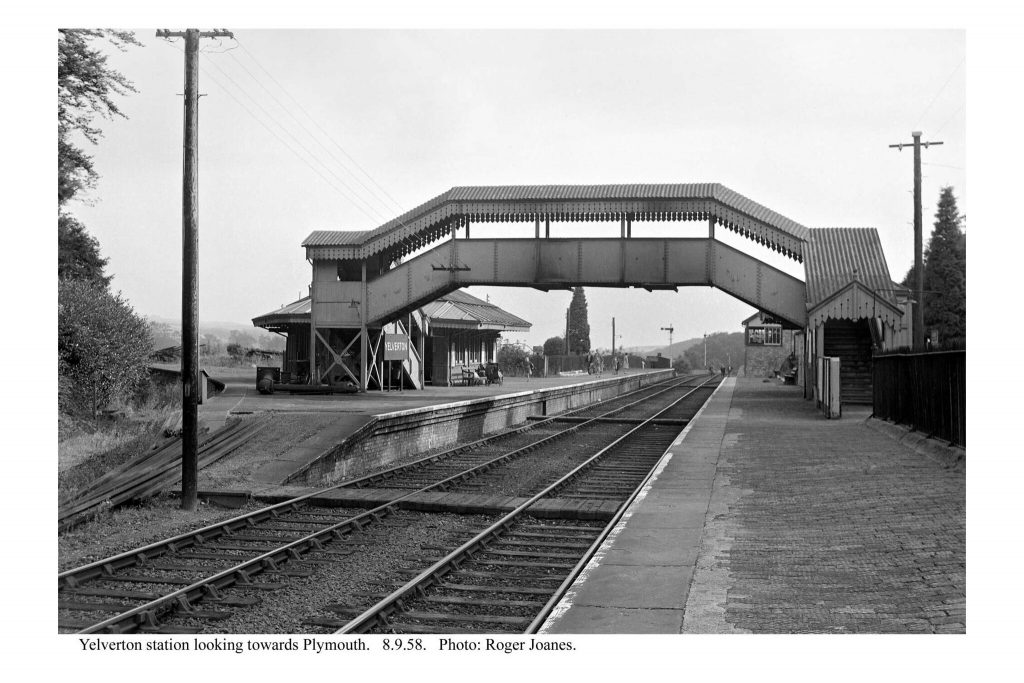
The Launceston Branch carried passenger trains for another six years.
Copyright: Roger Joanes. Shared under Creative Commons. +
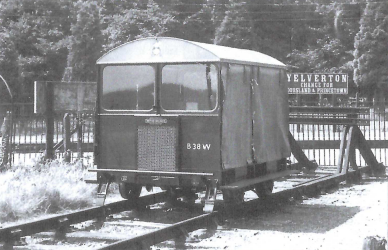
A gate in the iron fence just left of the trolley was the start of a footpath from the Up platform to Gratton Lane.
The scout had roamed the old station, and taken away materials, with the permission of the owner, on several occasions.
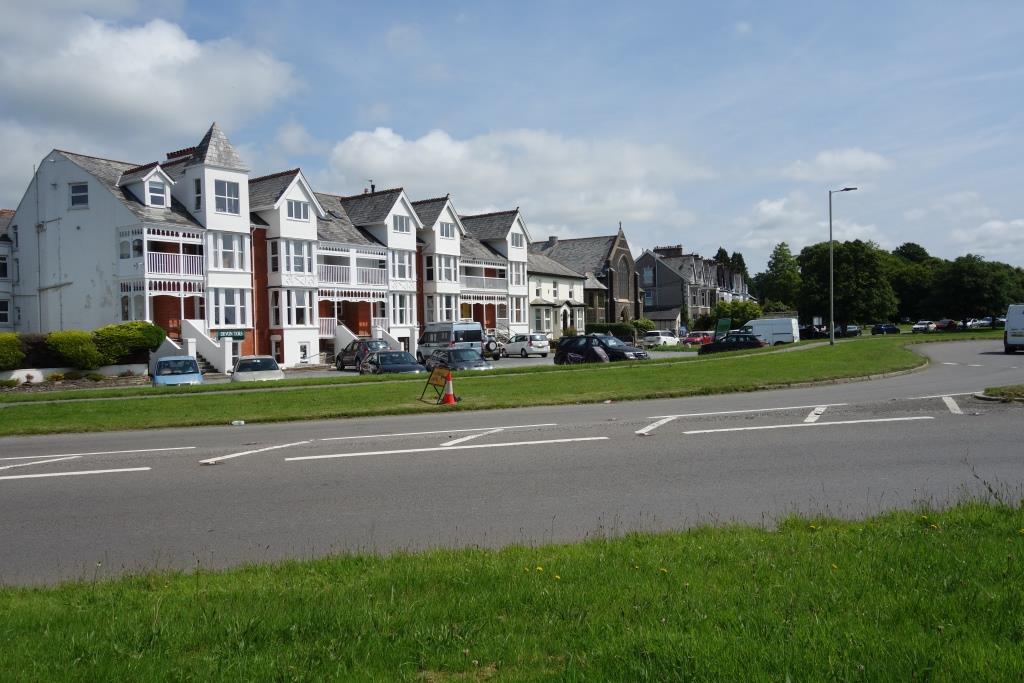
The Plymouth & Dartmoor was one of the earliest railways to be built in Devon. The horse-worked waggonway, operated like a turnpike road, was completed through to Princetown in 1826. It was promoted by Thomas Tyrwhitt as the means by which Dartmoor could be cultivated. It was intended to carry in soil improvers, coal and materials and carry out agricultural produce and granite from new quarries on the western slopes. It did carry large amounts of granite but never made any difference to moorland farming. Most of its course beyond Yelverton was taken by the later Princetown Railway, opened in 1883.
The P. & D. was not vastly different to the Stockton & Darlington, whose 200th anniversary in 2025 is being used to celebrate the birth of the modern railway. No passengers were carried on the P. & D. and locomotives were never introduced.
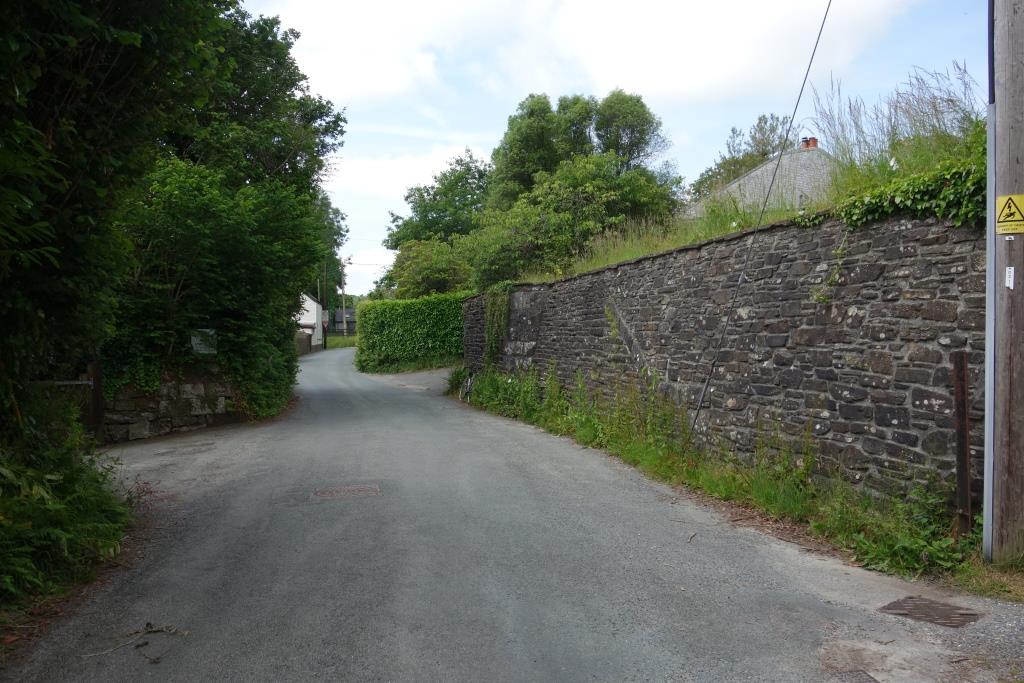
Dousland
The Princetown Branch deviated from the course of the P. & D. to ease the curve and provide for a station, the only intermediate one on the line.
Prowse’s Crossing
The line followed Burrator Road and crossed Iron Mine Lane.
The scout continued along Burrator Road and turned towards the reservoir. He pushed his bicycle up a path and joined the branch formation for the ride to Princetown.
Burrator Halt
The halt was opened in 1924 for labourers on the dam’s enlargement but soon became available to the public.
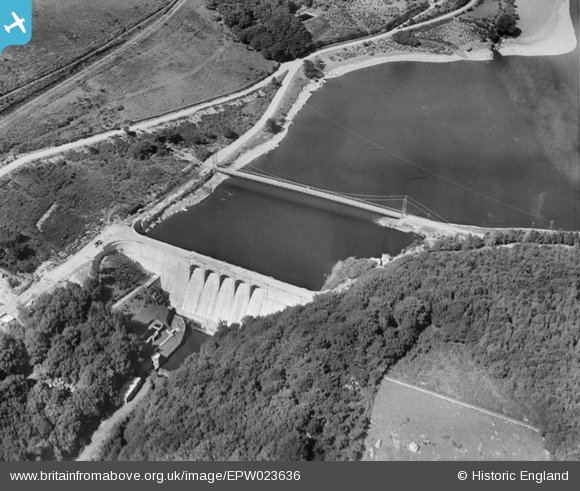
Lowery Crossing
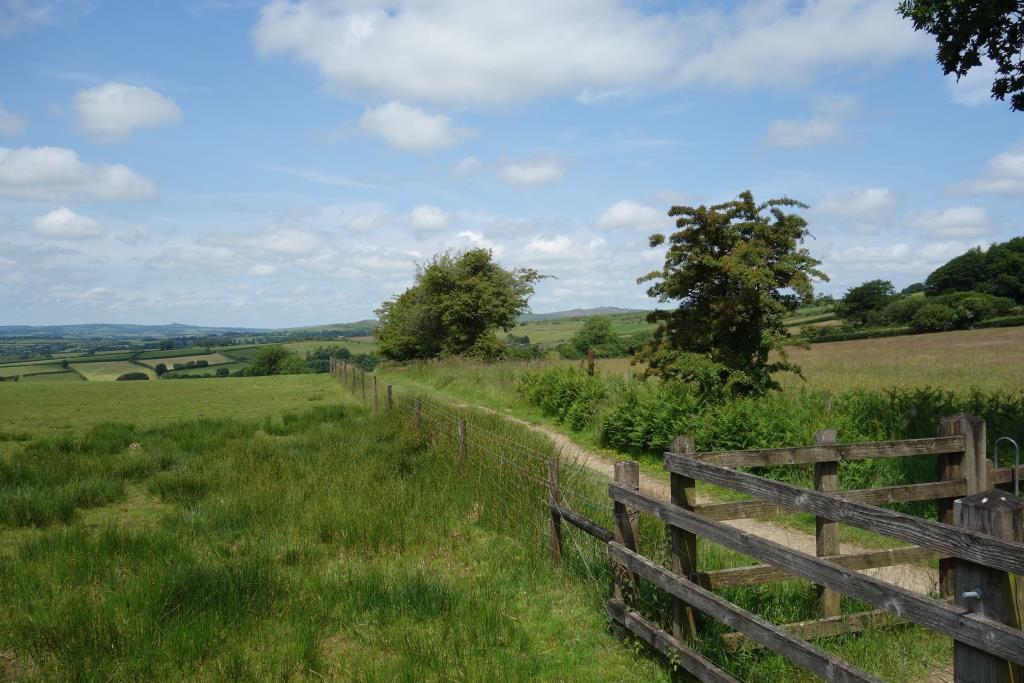
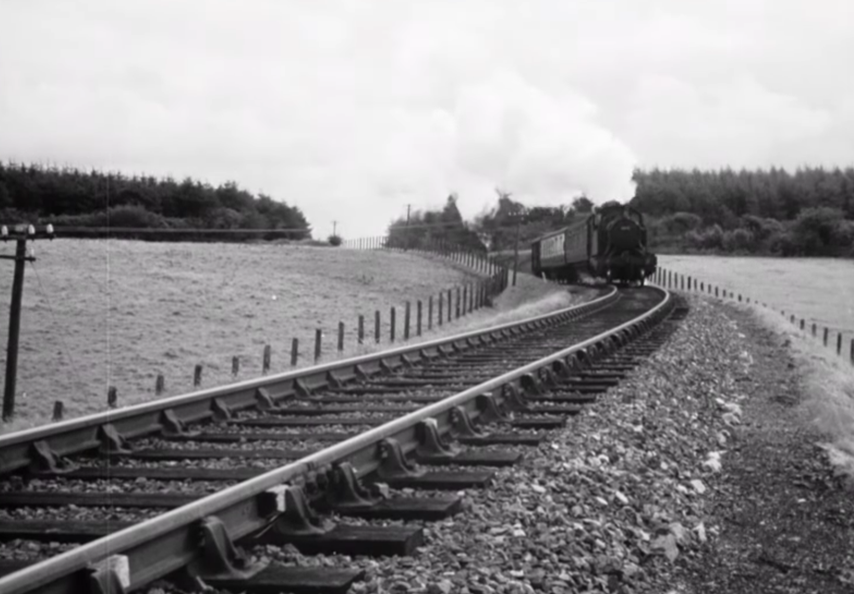
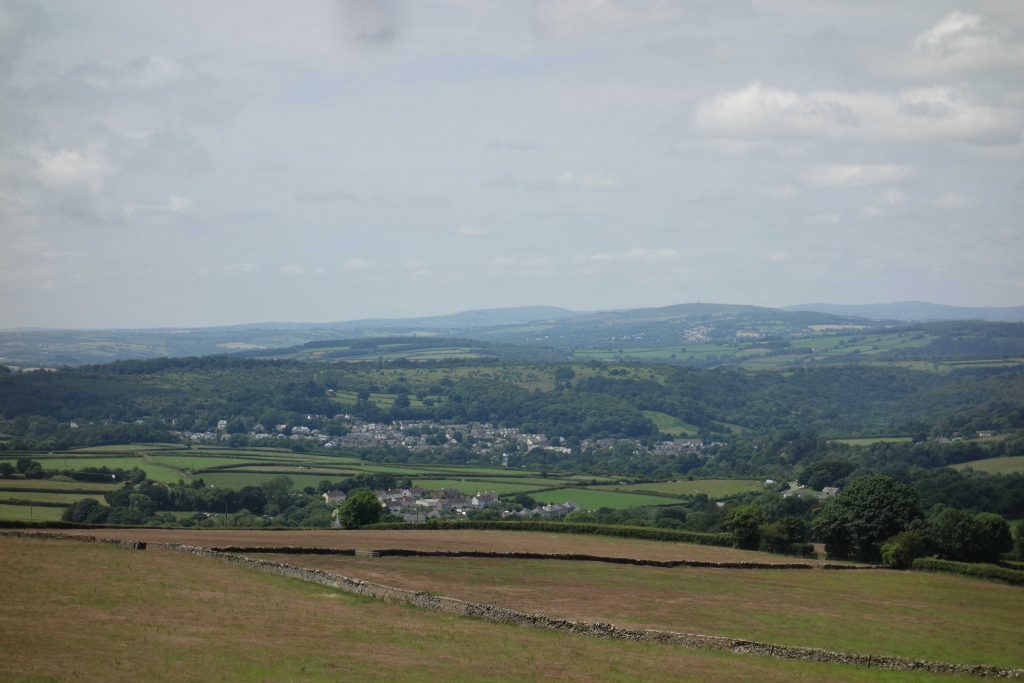
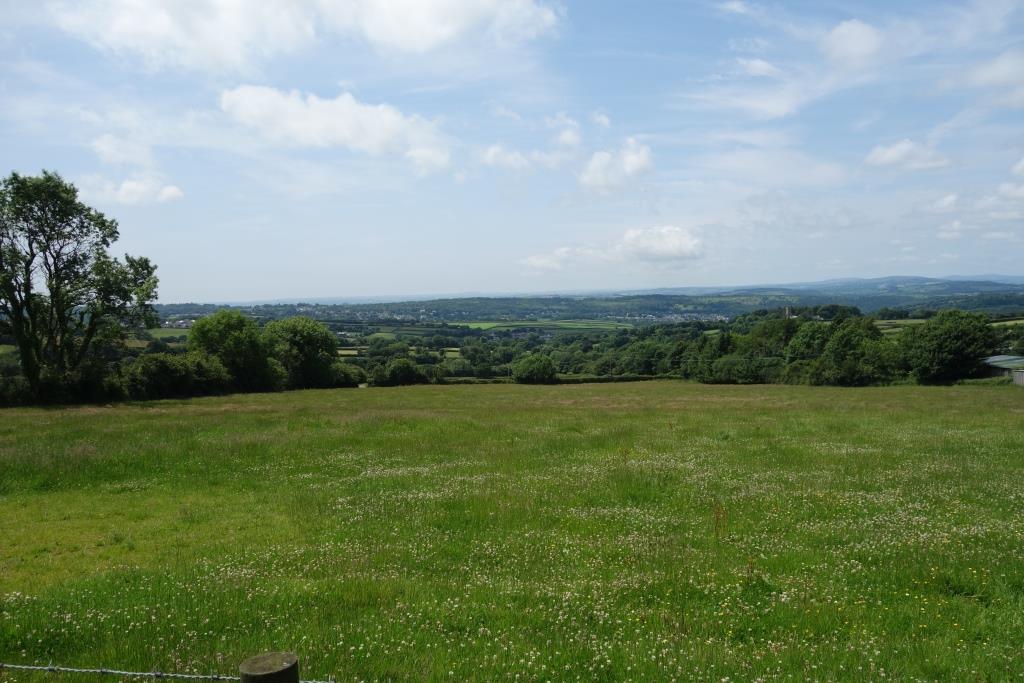
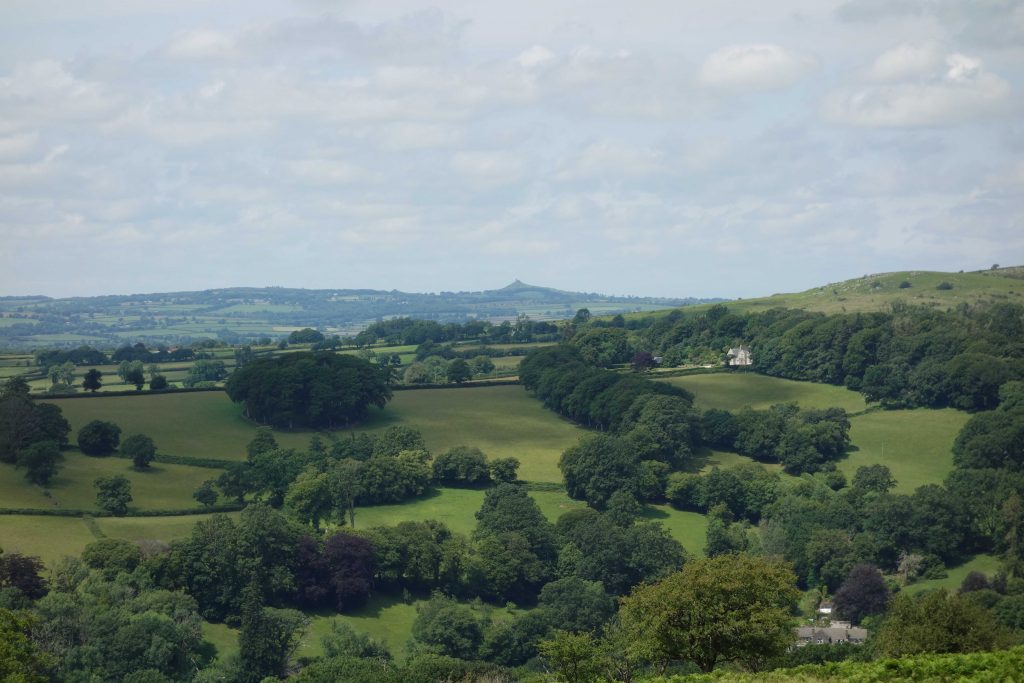
Ingra Tor Halt
The halt was opened in 1936, originally for the benefit of Foggintor quarrymen travelling from King Tor Halt to Ingra Tor Quarry, which was revived to supply granite for a Devon County Council contract. The quarry was abandoned again in 1941 but the halt remained and was used by hikers and tourists. In latter years, it had at least one regular passenger, a lady who lived at Routrundle.

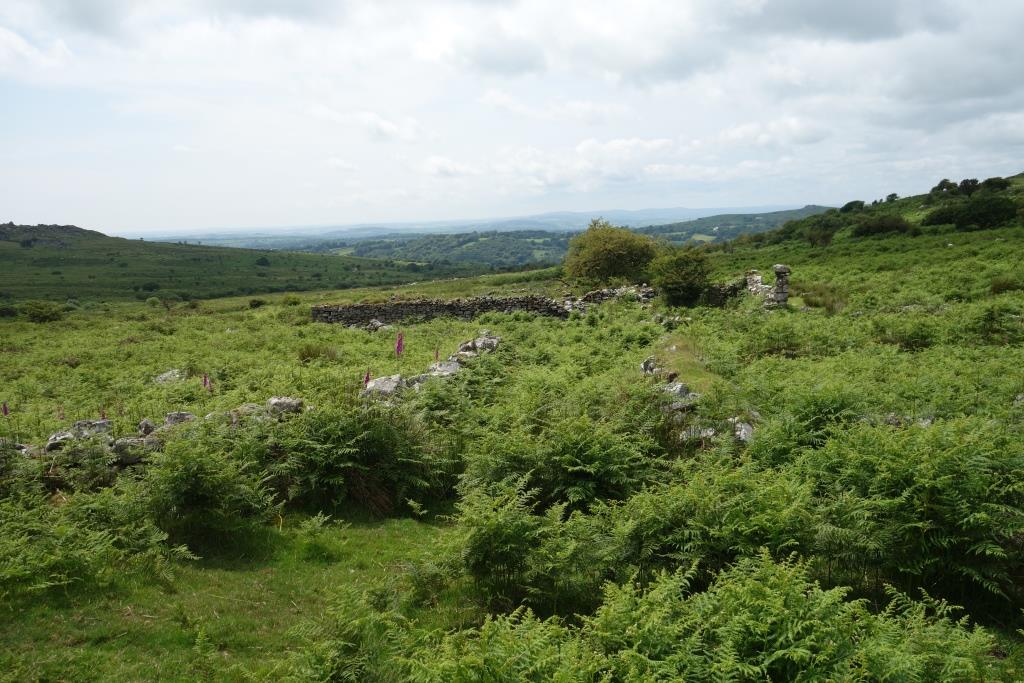
Swell Tor Quarries
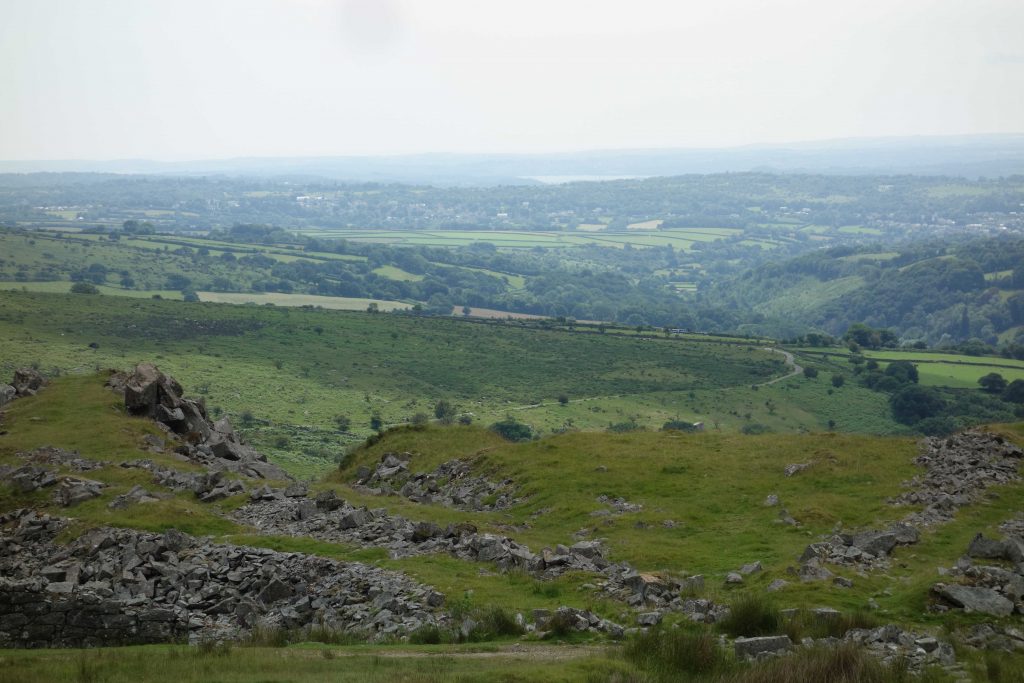
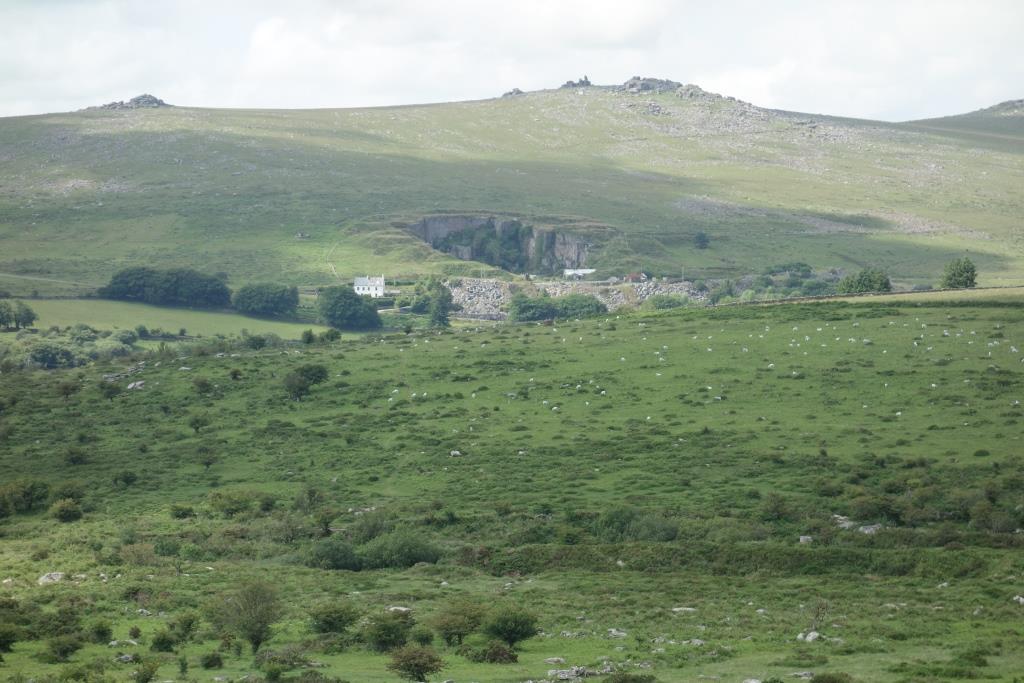
Foggintor Quarry
The scout intends to visit the old workings.
King Tor Halt
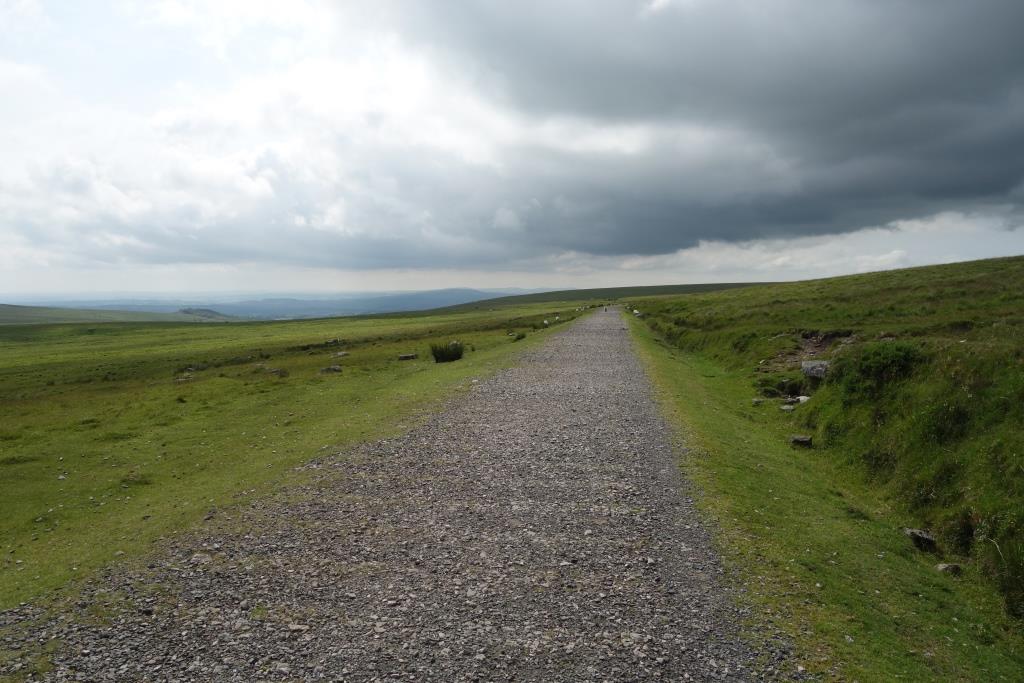
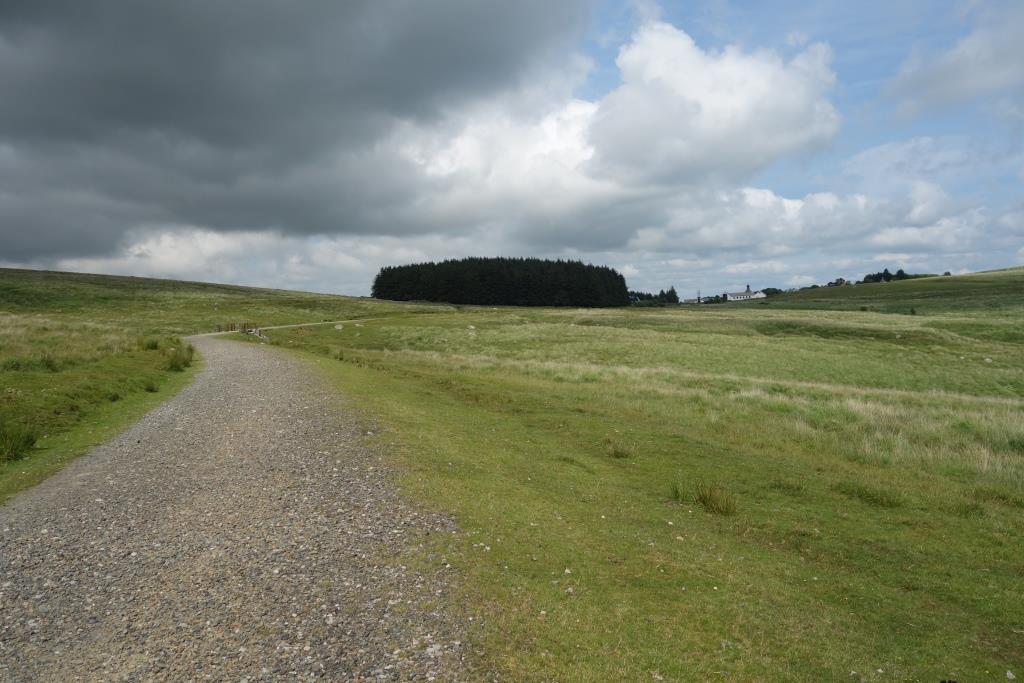
Princetown
At 1,373 feet, Princetown was England’s highest station. The line climbed 950 feet from Yelverton.
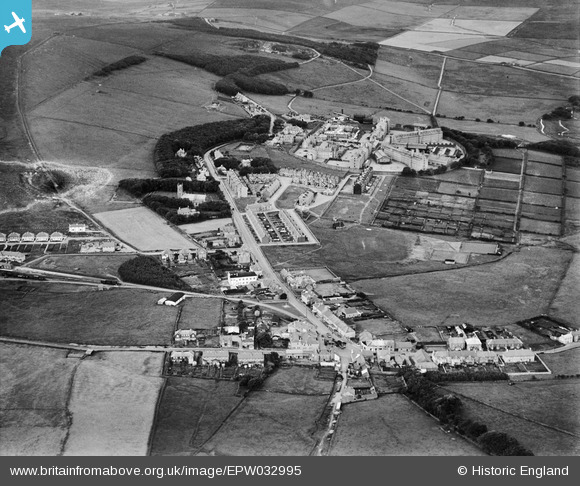
Part of the station building is in picture at centre left. The road leading from the station, the course of the Plymouth & Dartmoor going towards its terminus by the Railway Inn, is today’s Station Cottages, but the O.S. marked it as Station Road. Oddly, there is another Station Road, the next above Station Cottages. It must have been intended to build this through to the station but in fact it stops short and continues as a footpath.
The “S”-shaped track seen leading from the prison towards a plantation was the course of the Omen Beam Tramway, which brought peat to a naphtha works.
“A Brief Journey” – a sailor’s run ashore in 1954 to Plymouth, Dartmoor and Looe, includes a journey on the train between Yelverton and Princetown.
Here are some splendid superimpositions of black and white photographs on the present day landscape.
“There are railways up Snowdon and Snaefell. Would it be so bad to have ours to Princetown rebuilt?”
From a letter to Dr. Kevin Bishop, National Park Officer, in 2015.
The Princetown Branch, climbing 10½ miles from Yelverton up to the high moor, across some of the wildest and most rugged terrain in Britain, was remarkable for this reason and because it served a single, remote community, often cut off by road in winter. Views from the train were quite breath-taking—at one point the line follows a two-mile horseshoe curve to gain a quarter of a mile as the crow flies—although these were probably not appreciated overmuch by old lags going for long stretches at H.M. Hotel, Dartmoor. At 1,400 feet, Princetown was England’s most elevated railway station.
Many people associate railway closures with Dr. Beeching alone, and quite understandably, but the process had in fact been going on prior to his appointment as Chairman of the British Transport Commission in 1961. Long before Beeching penned his “Reshaping” report in 1963, the shadowy Branch Line Committee had been quietly at work with its own razor.
One of its victims was the Princetown Branch, which the gang alighted upon in 1955. But this was not a line that could be closed quietly. The proposal attracted an unusually great and determined opposition, such that the local Transport Users’’ Consultative Committee decided against closure, partly because of the “special circumstances” of the prison. However, the local body did not have the final say: this was down to the Central Transport Consultative Committee, which in the event summarily dismissed the local decision and advocated closure.
It often seems that there is no middle ground between the maintenance of a railway network at its greatest extent, offering the widest range of complementary services, and complete dissolution. Not true perhaps on a national scale, for parts of the network are thriving, but when the example of Dartmoor is looked at, contraction certainly proved unstoppable. What began in 1956, with the loss of the Princetown Branch, was completed in 1972, when the Exeter to Okehampton passenger service was withdrawn. There were 31 stations on and around the moor; sixteen years later there was not one.
From “There were once 31 stations on and around Dartmoor”—E. & T.V.R., 1999.
After the 17th June refresher, the utilicon departed Princetown at 1712 and called at Postbridge so that the scout and his camping guest, who possesses boundless energy, could climb Bellever Tor. The utilicon returned to Christow at 1926.

